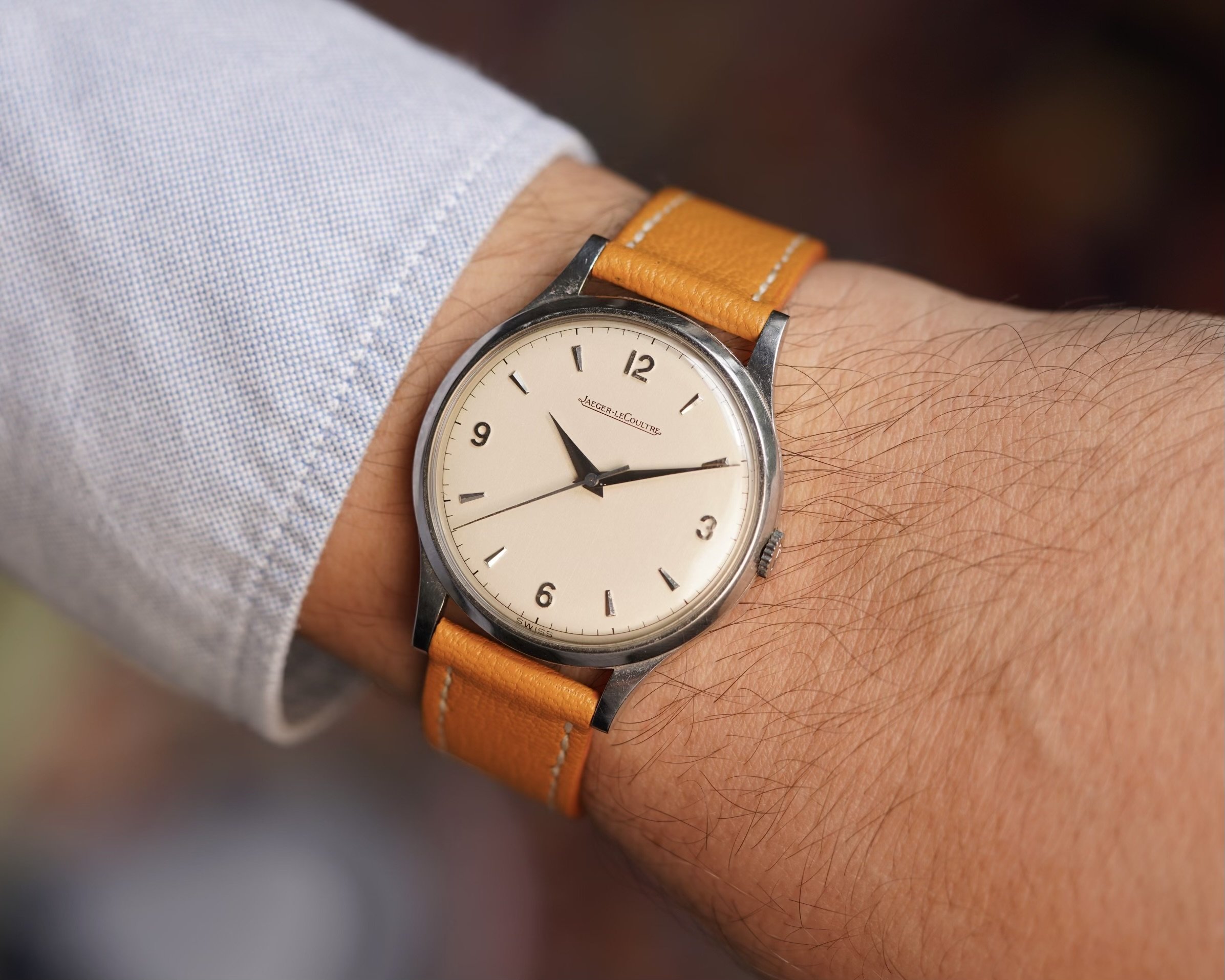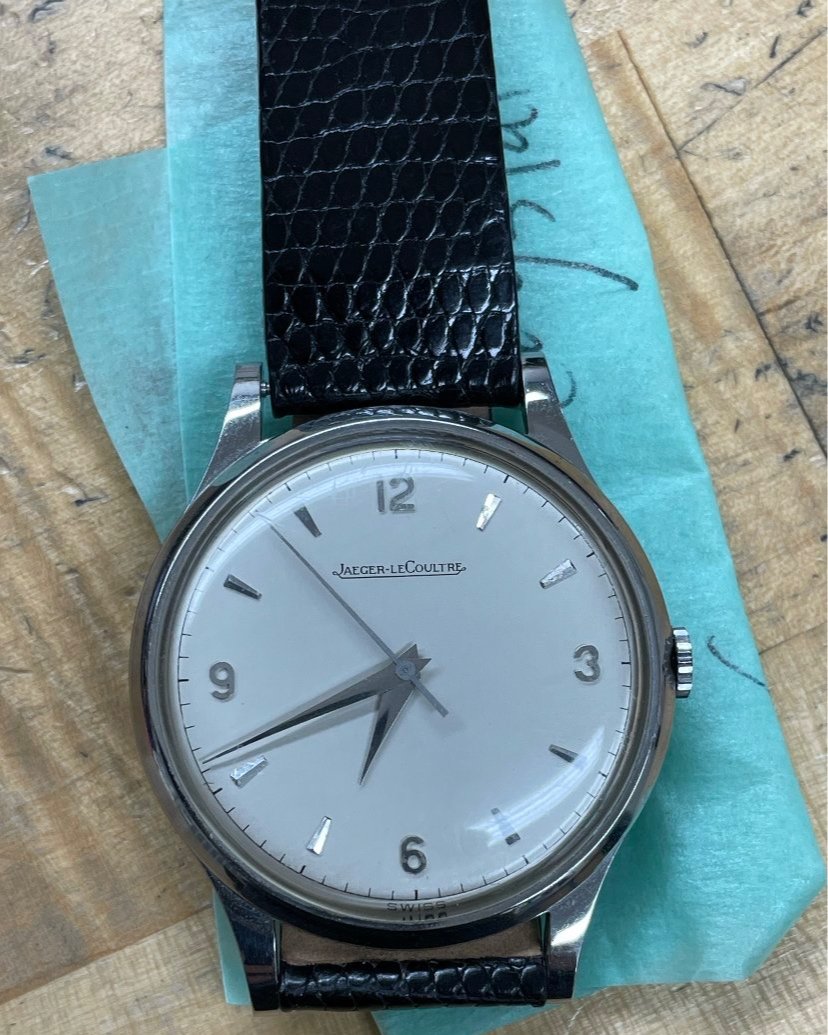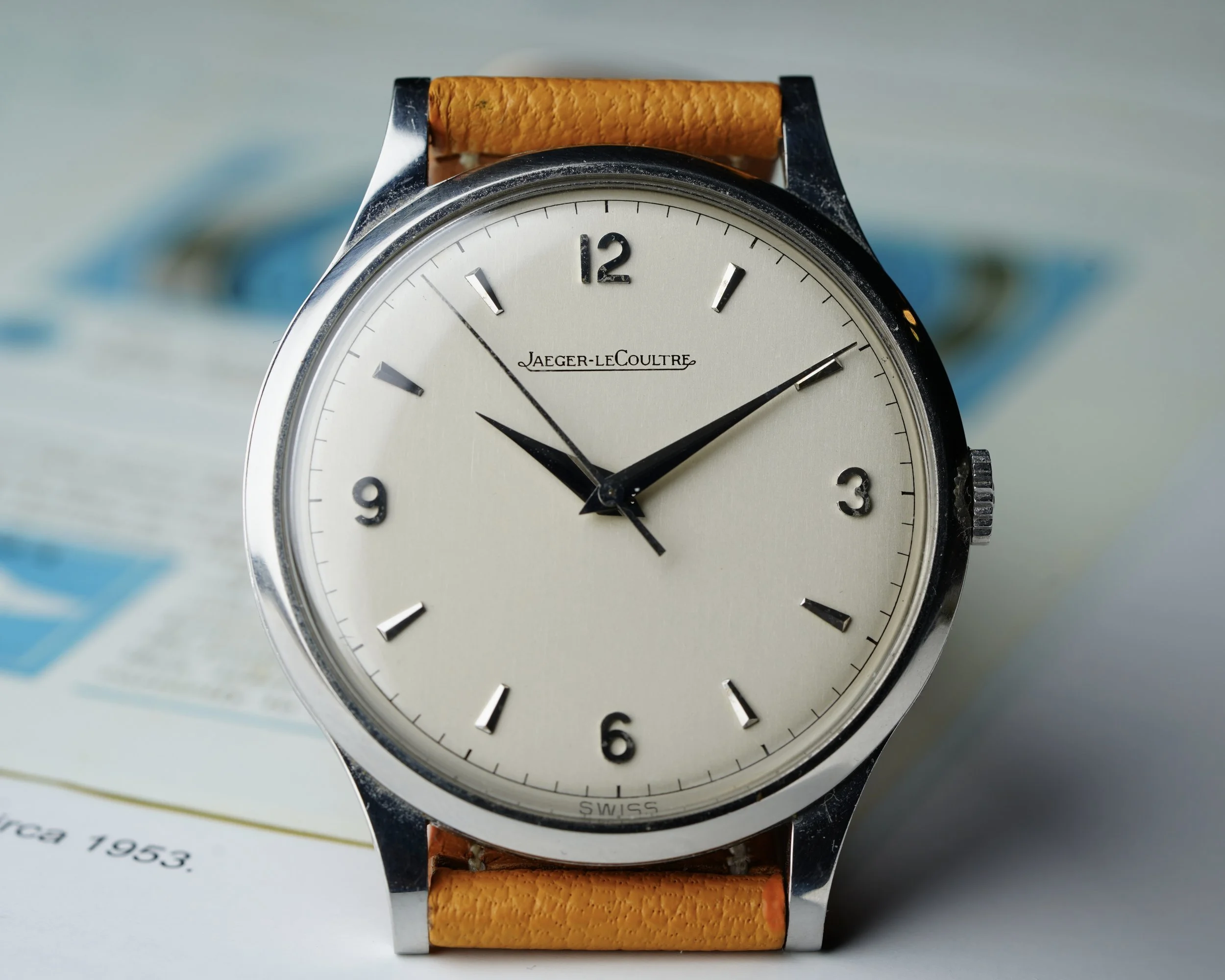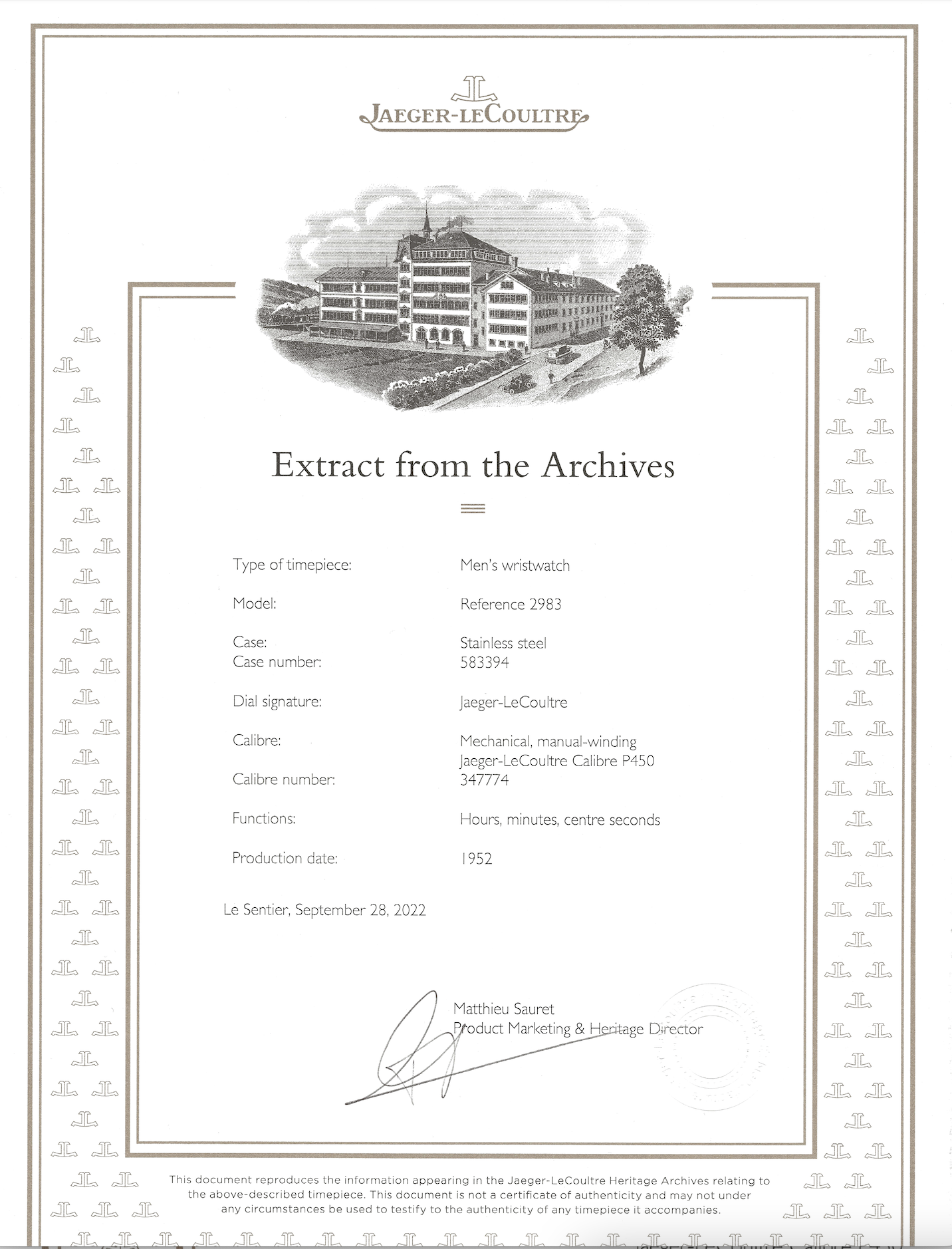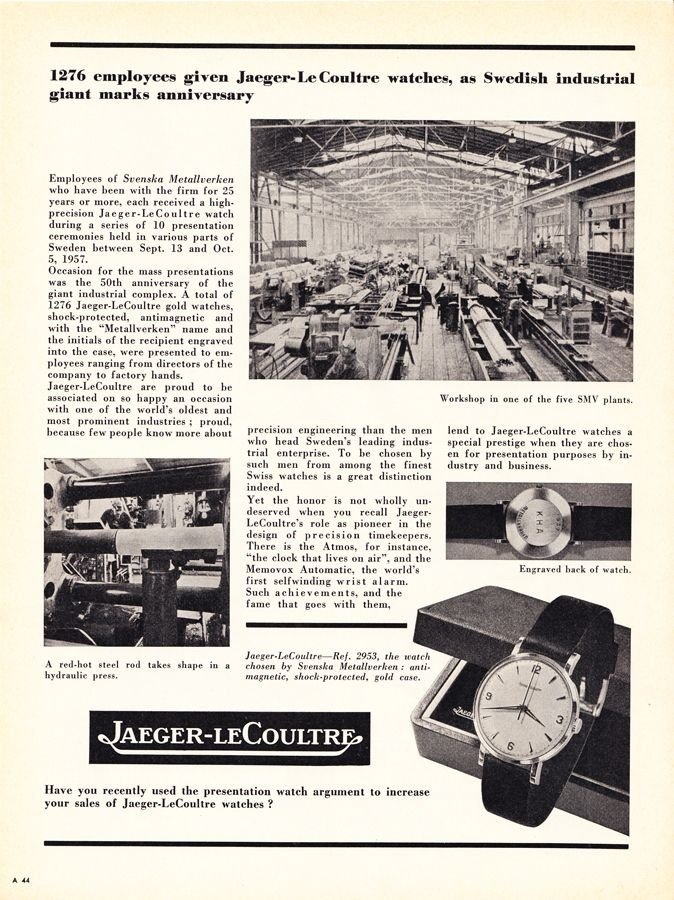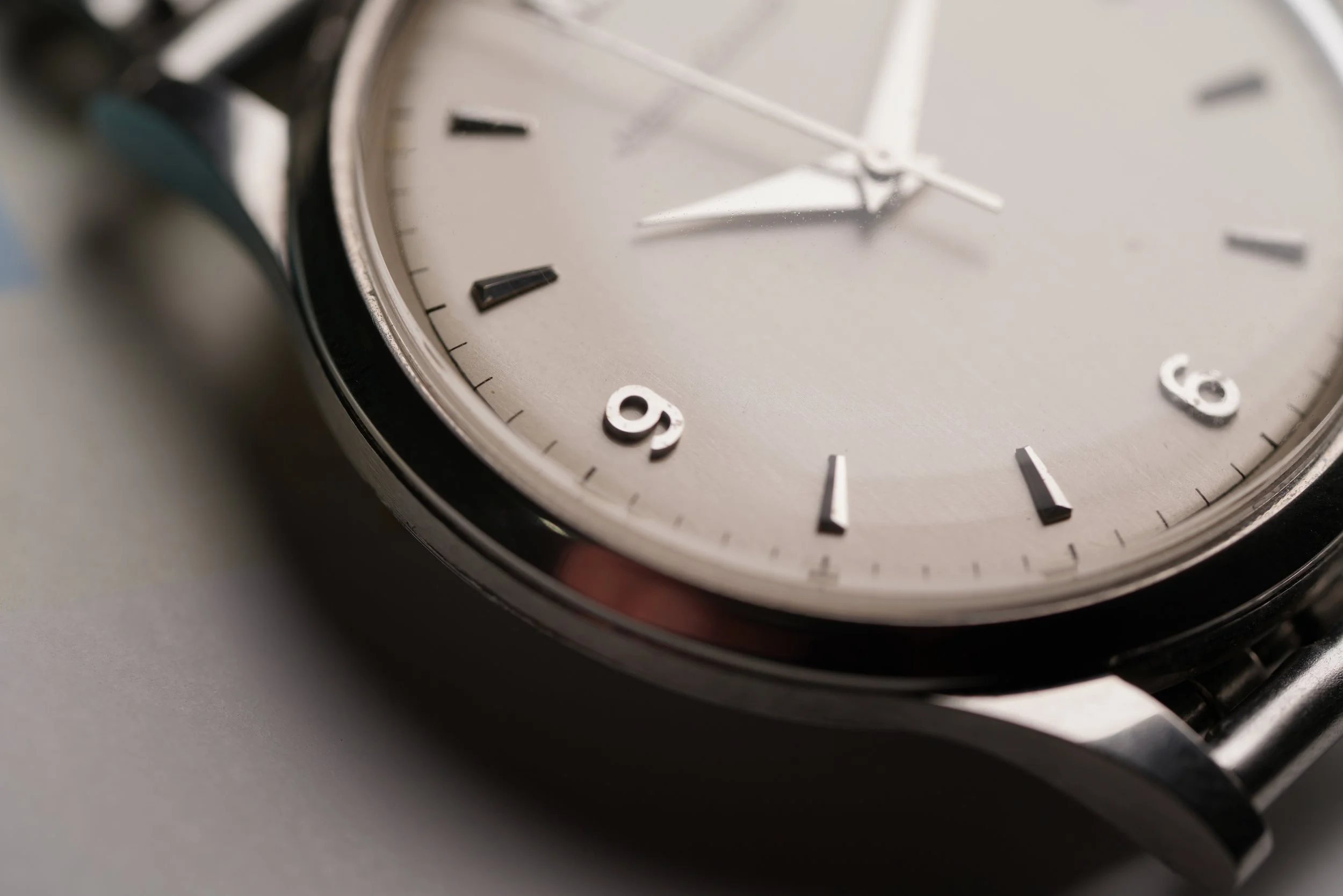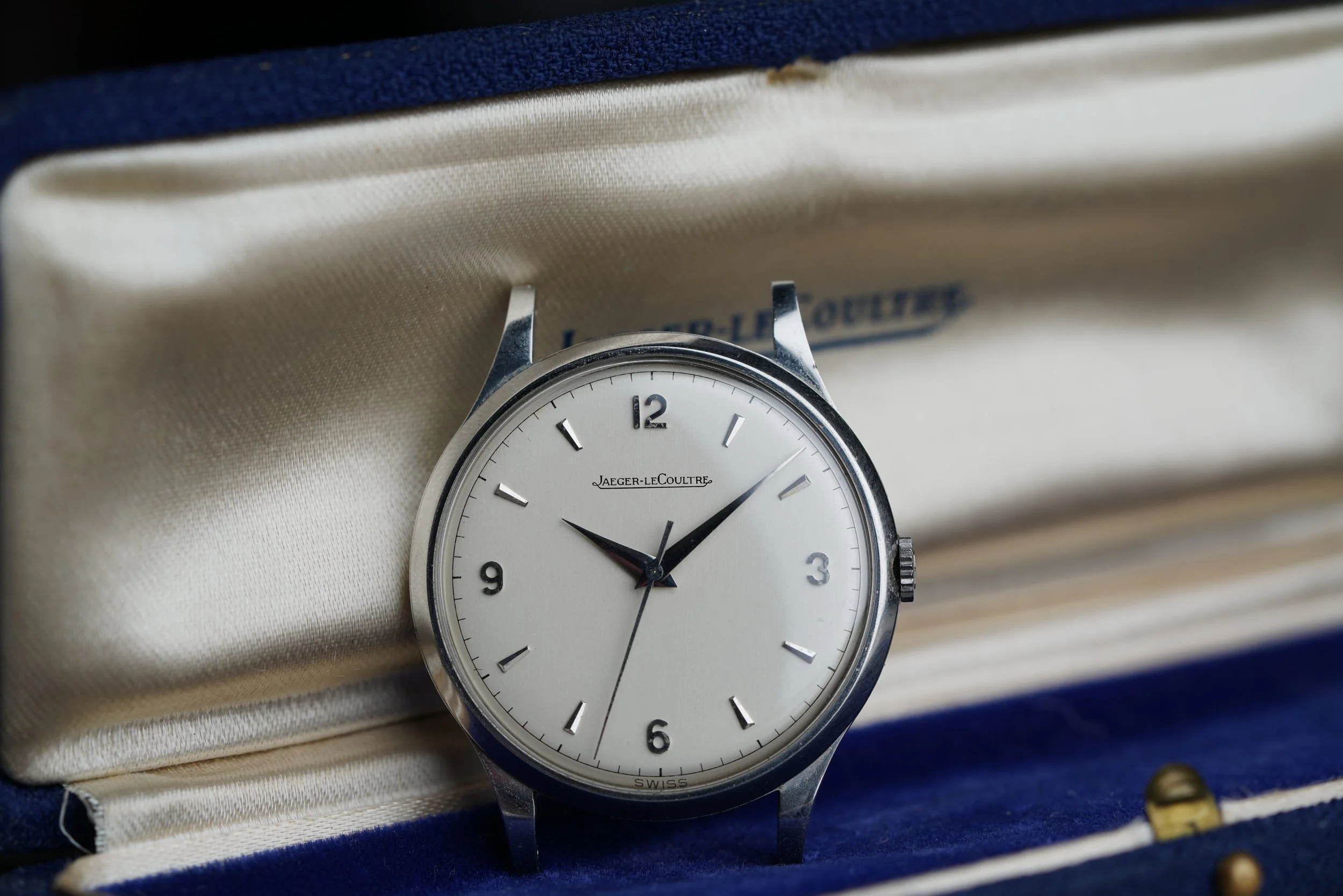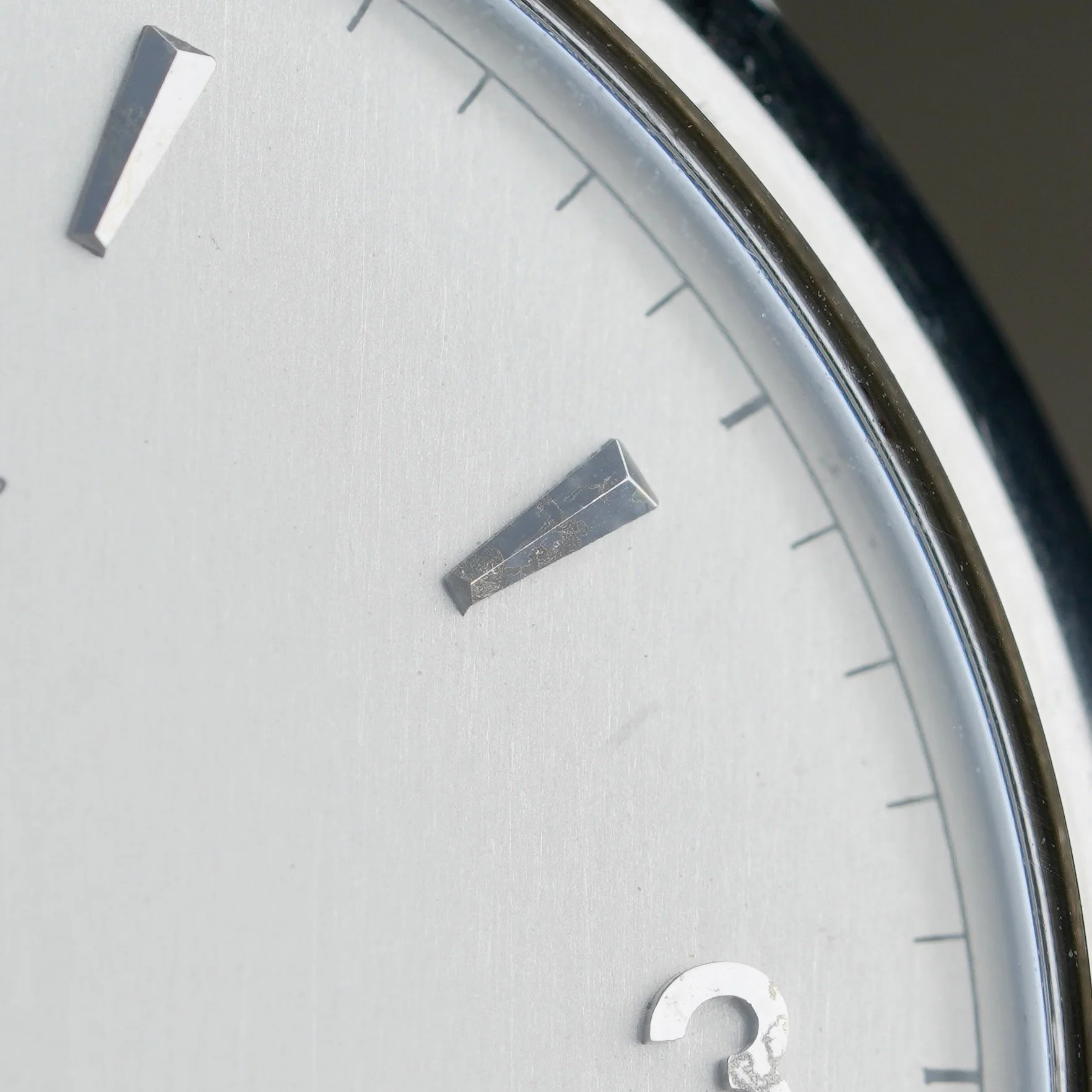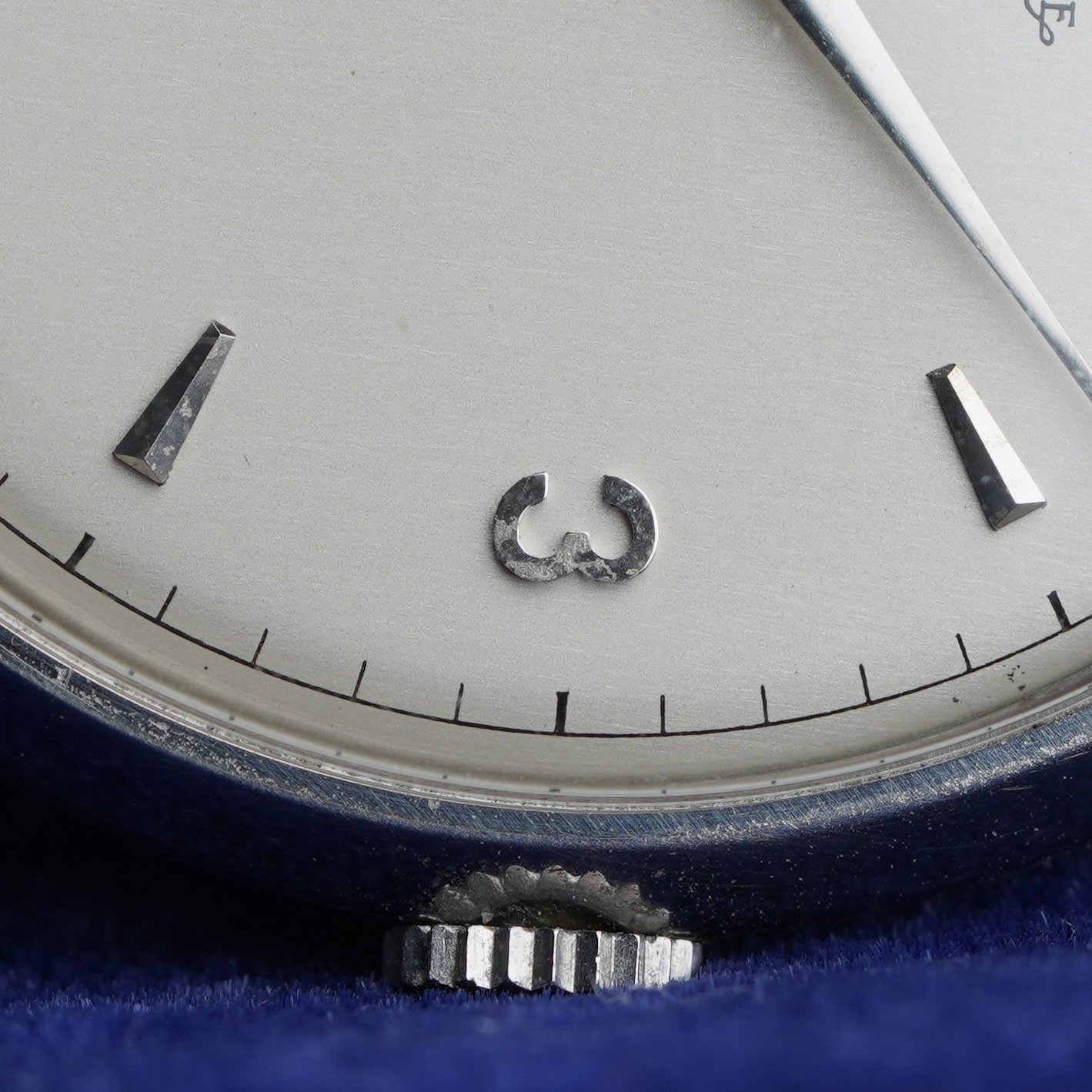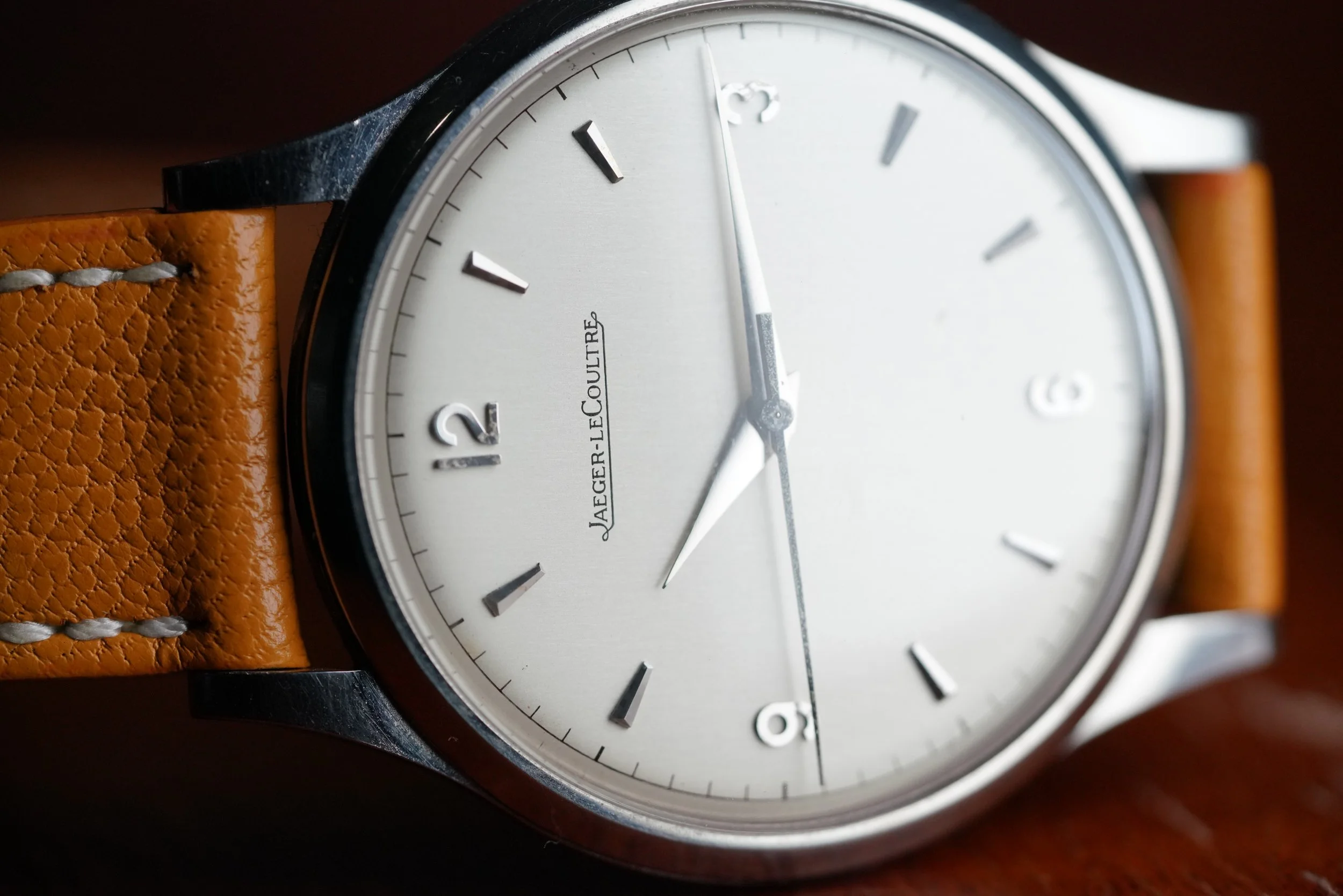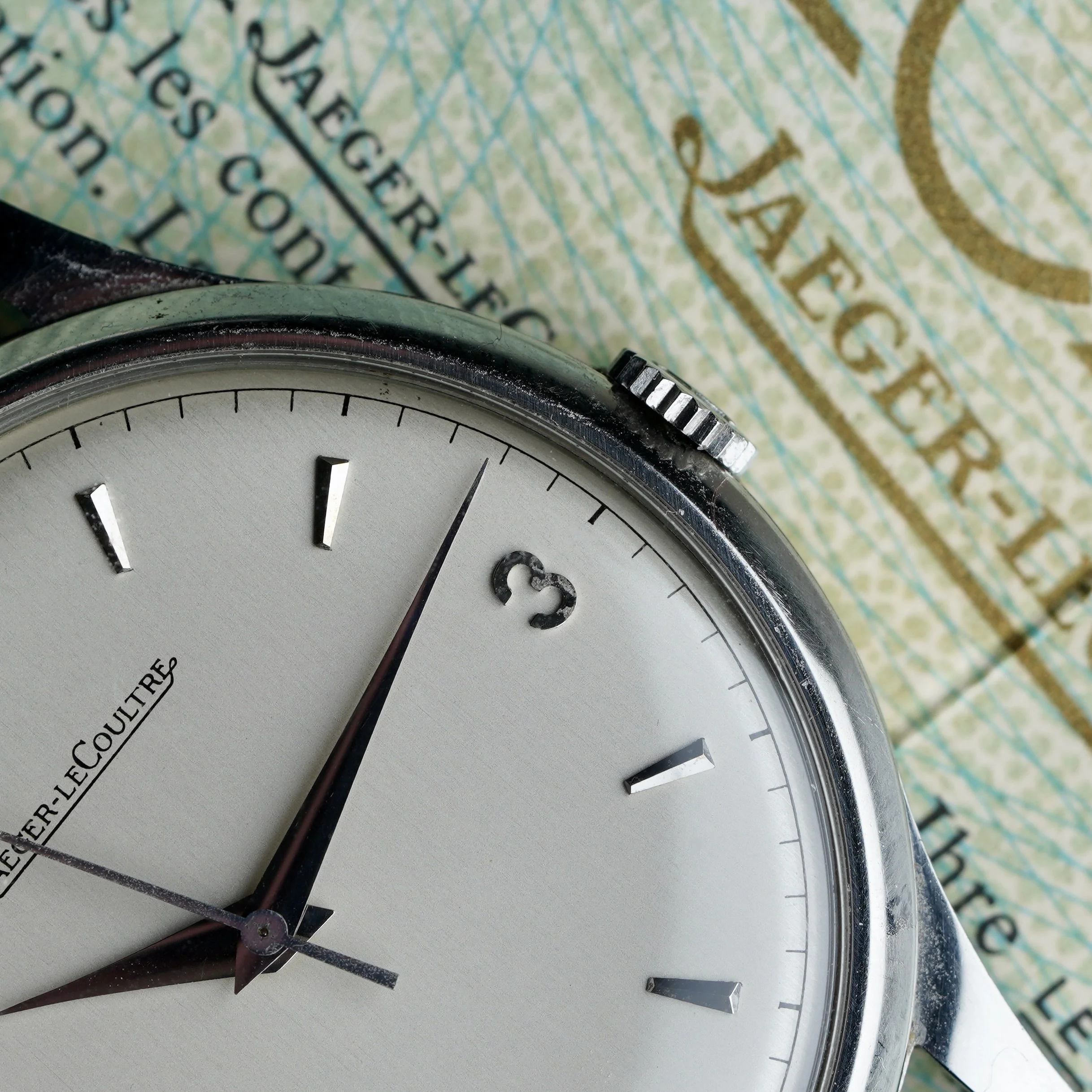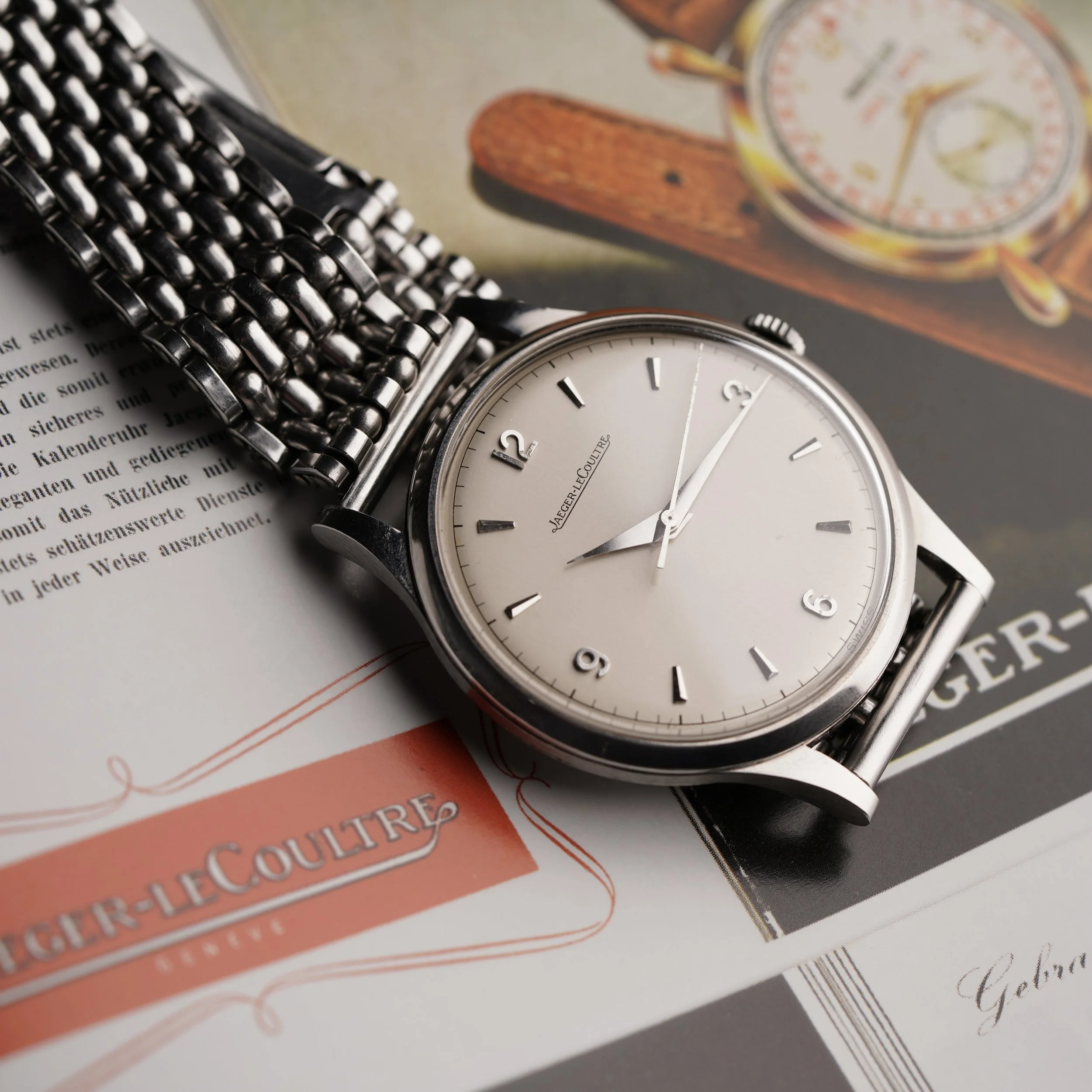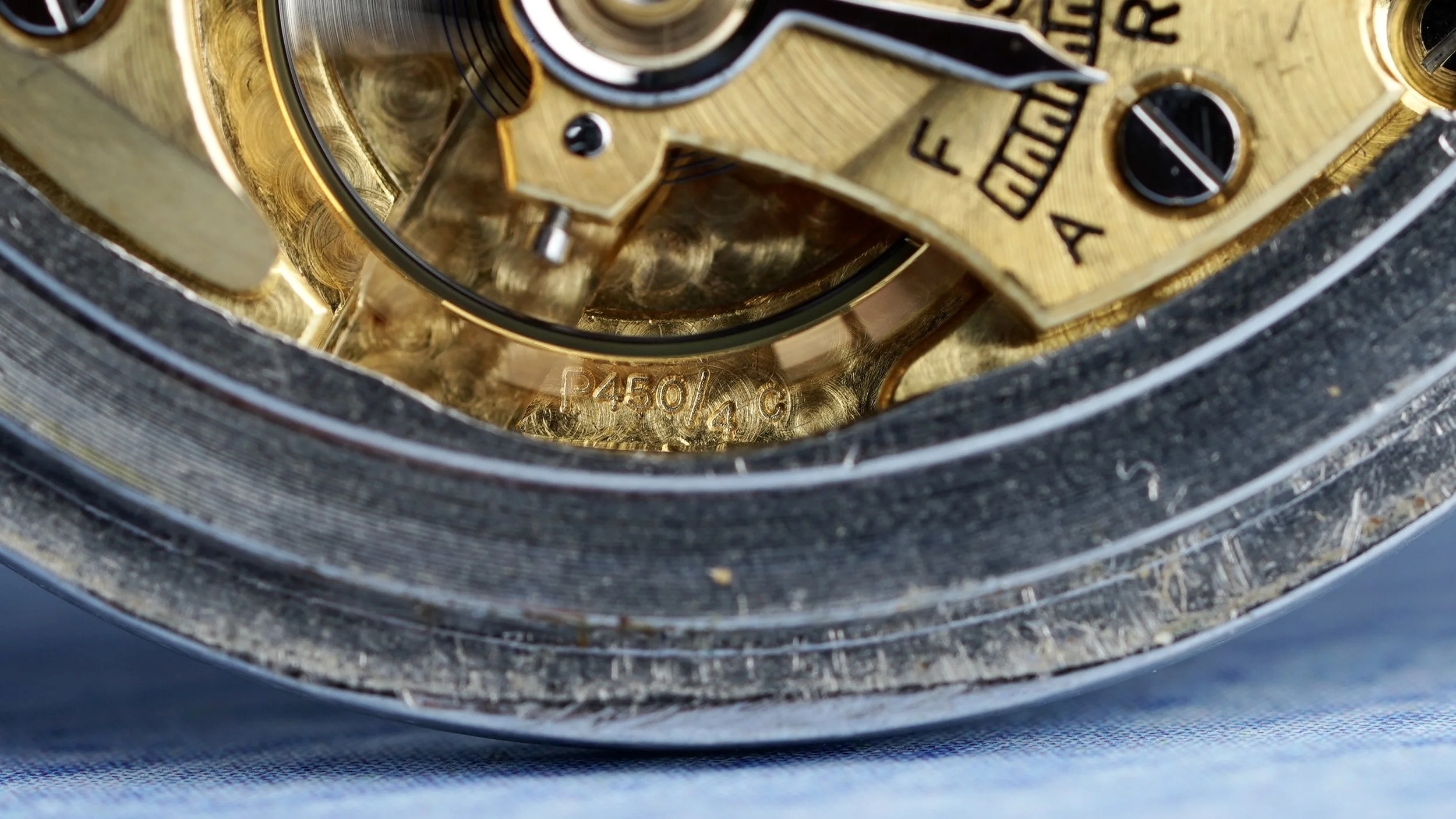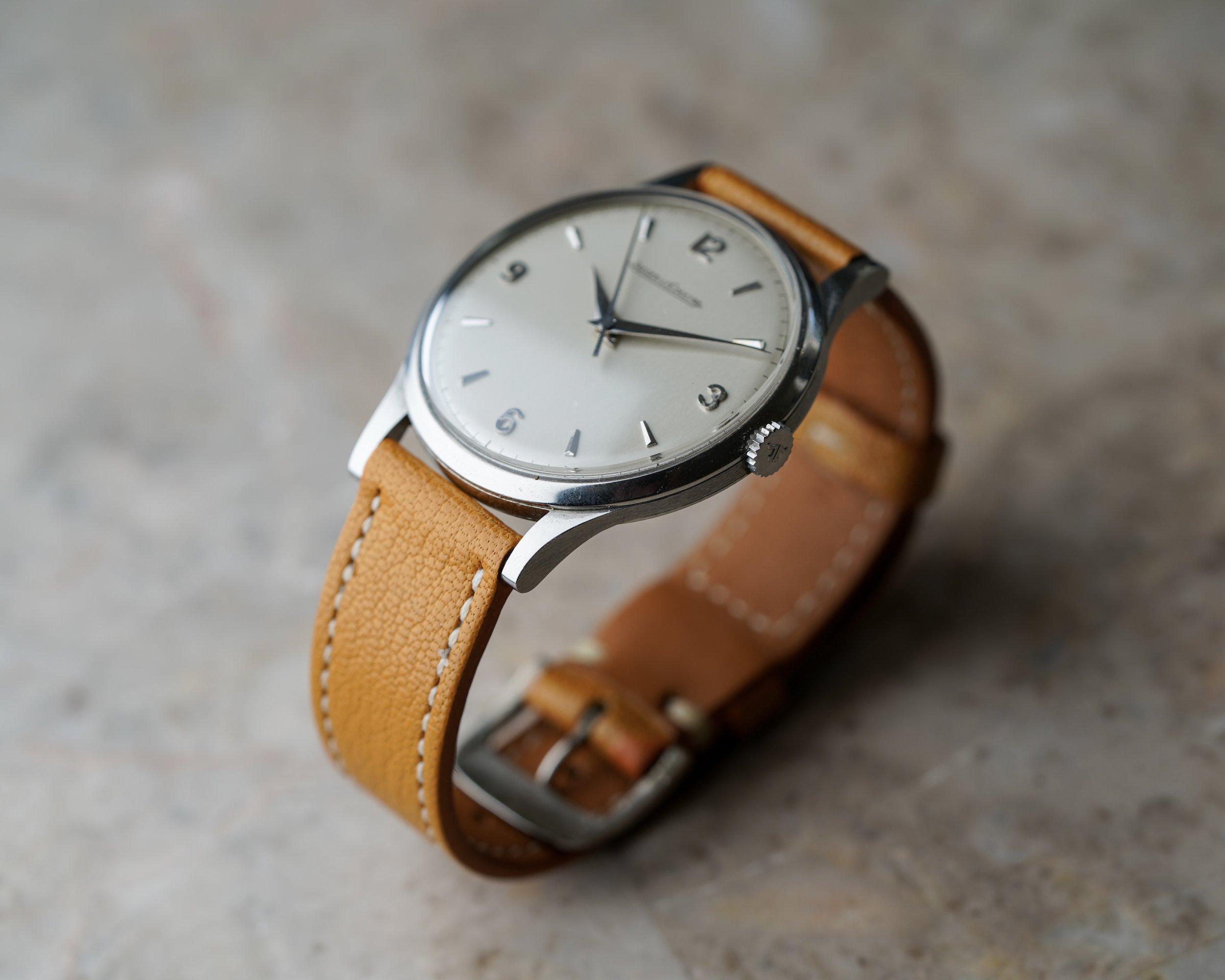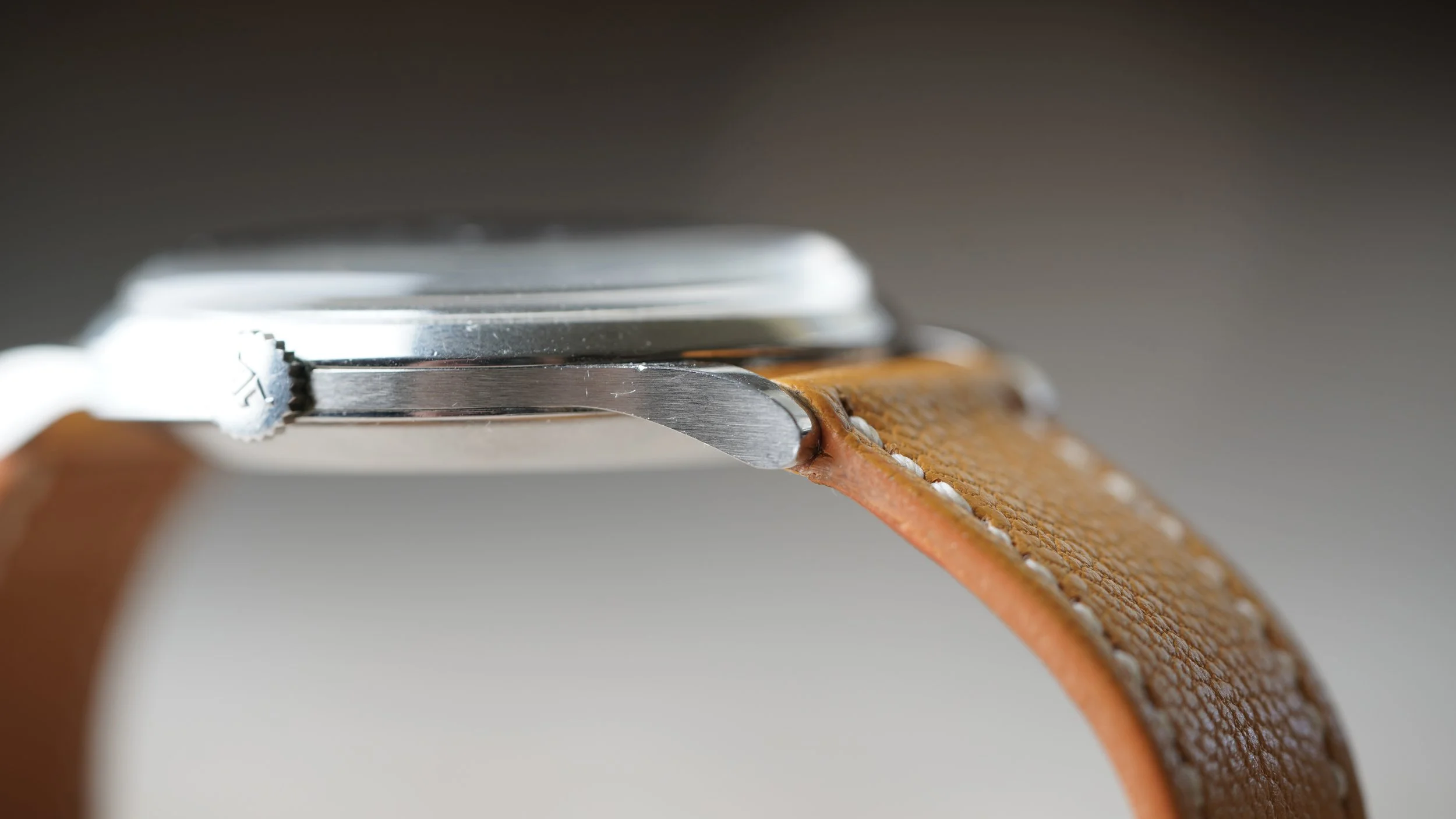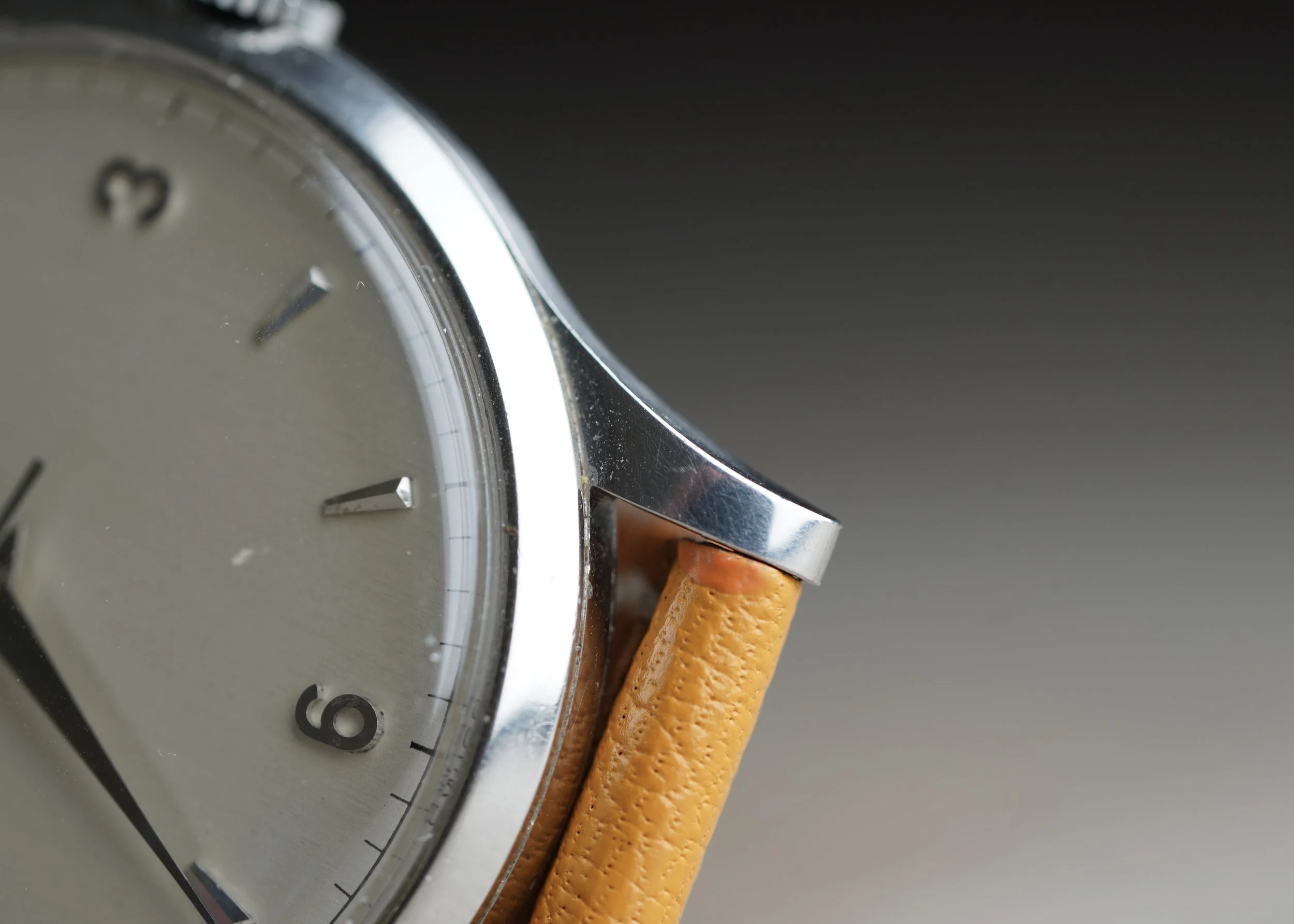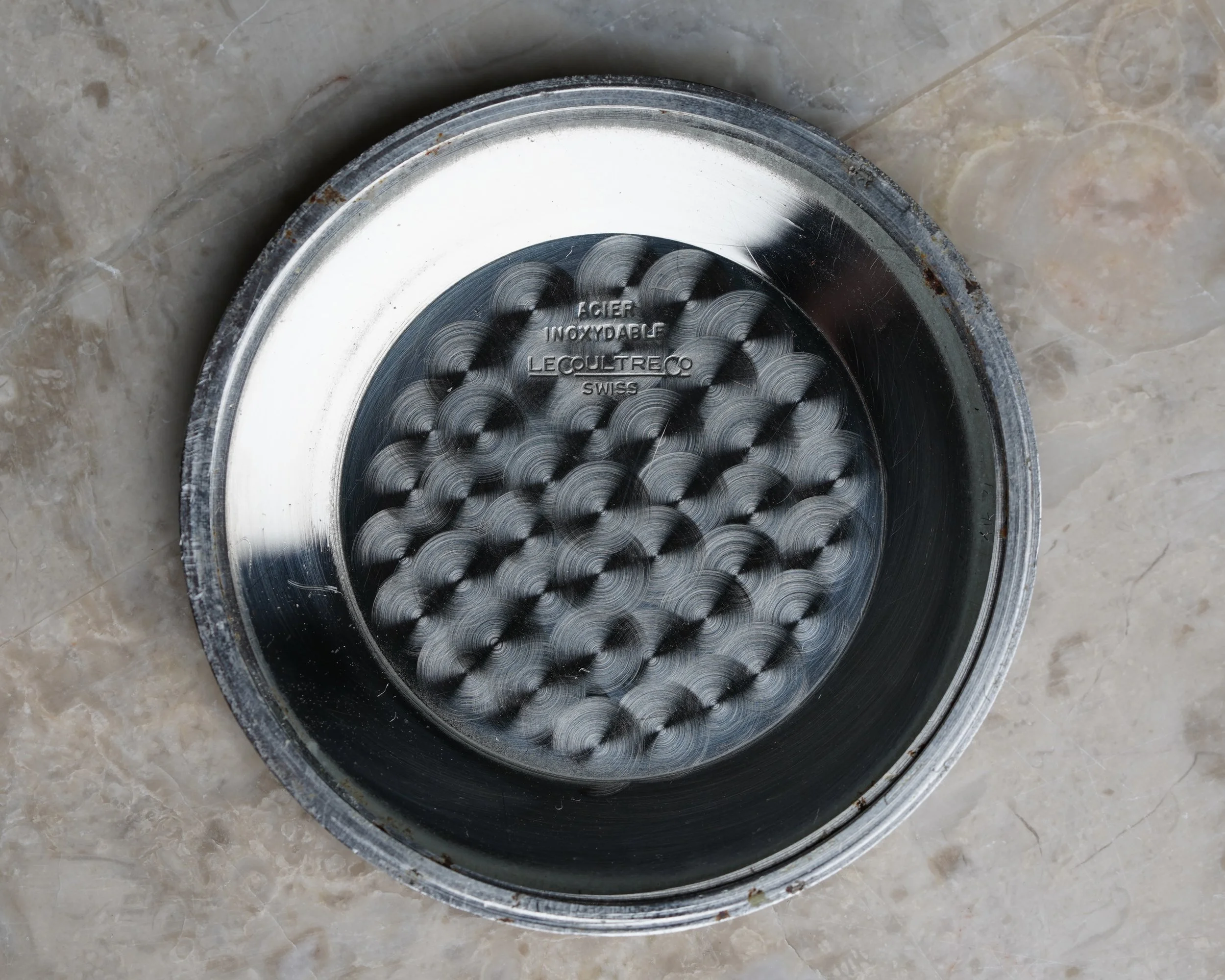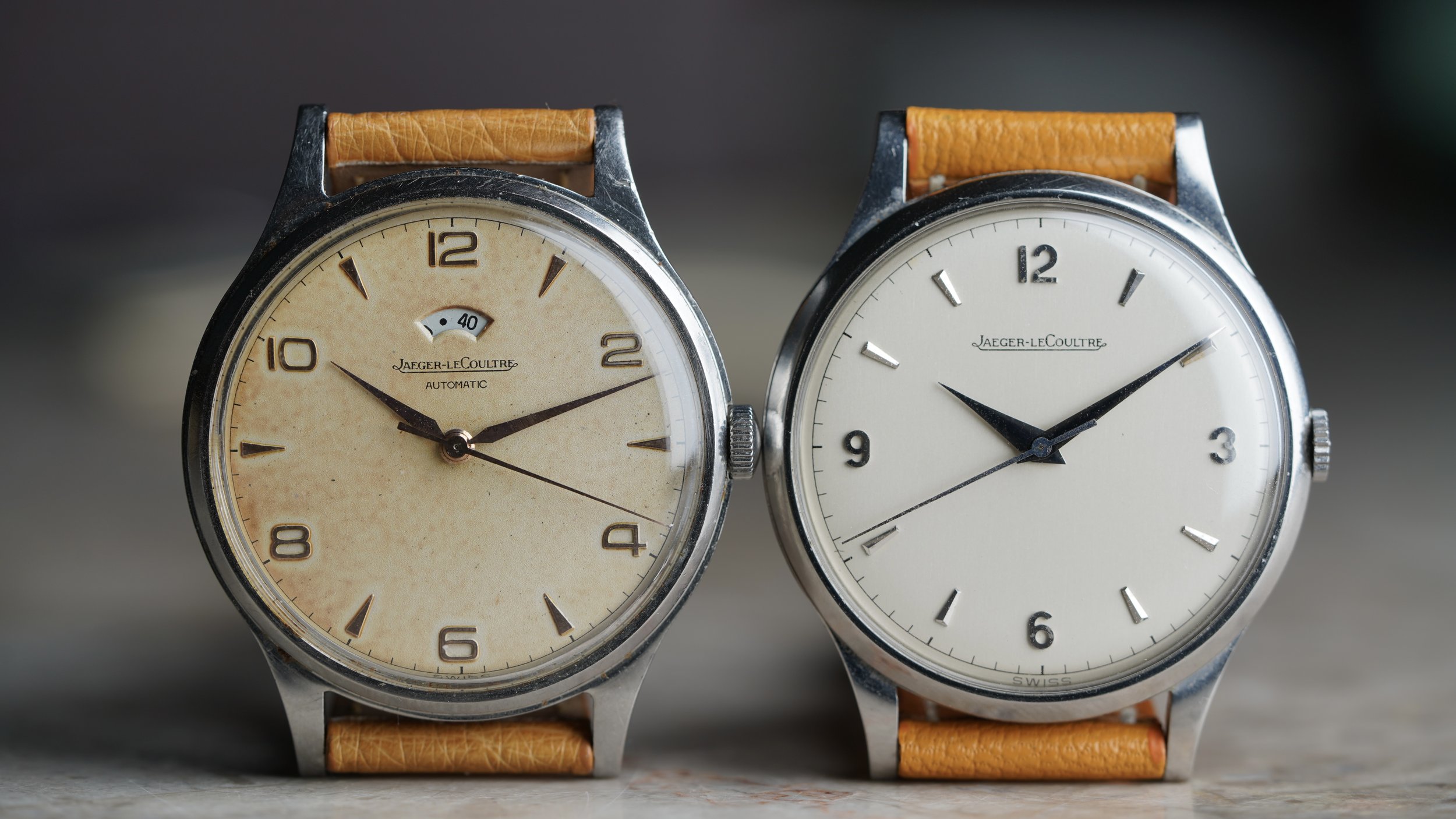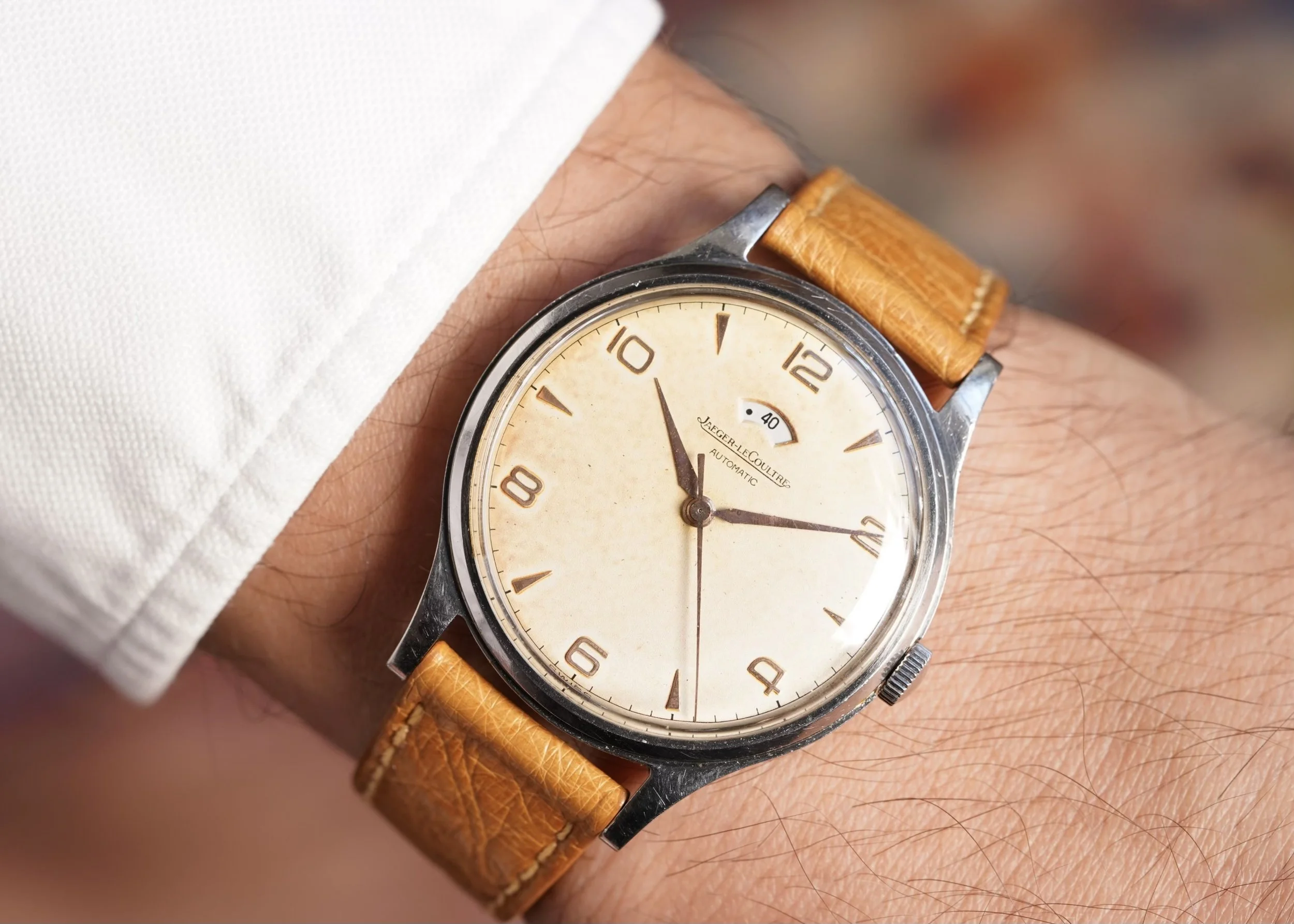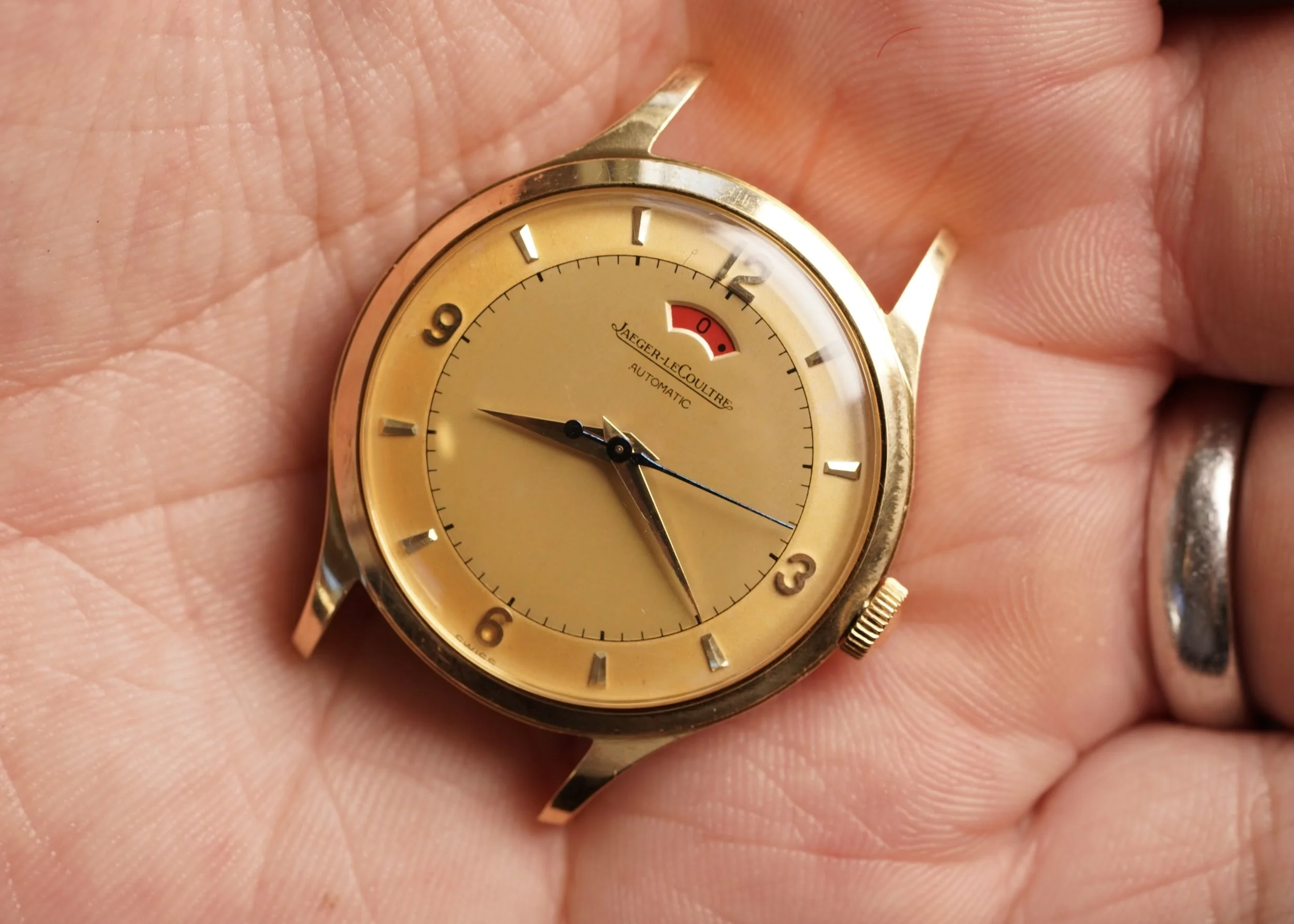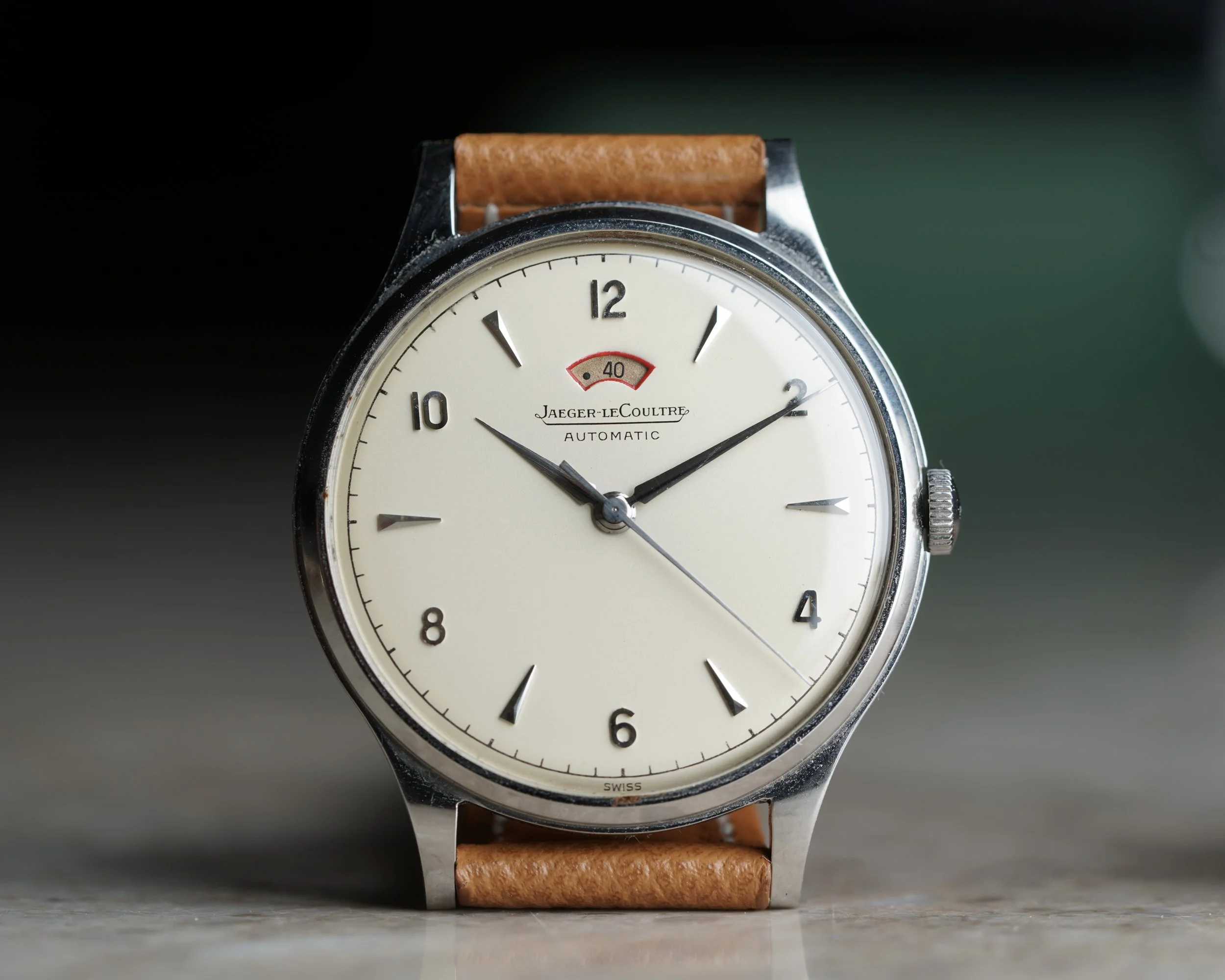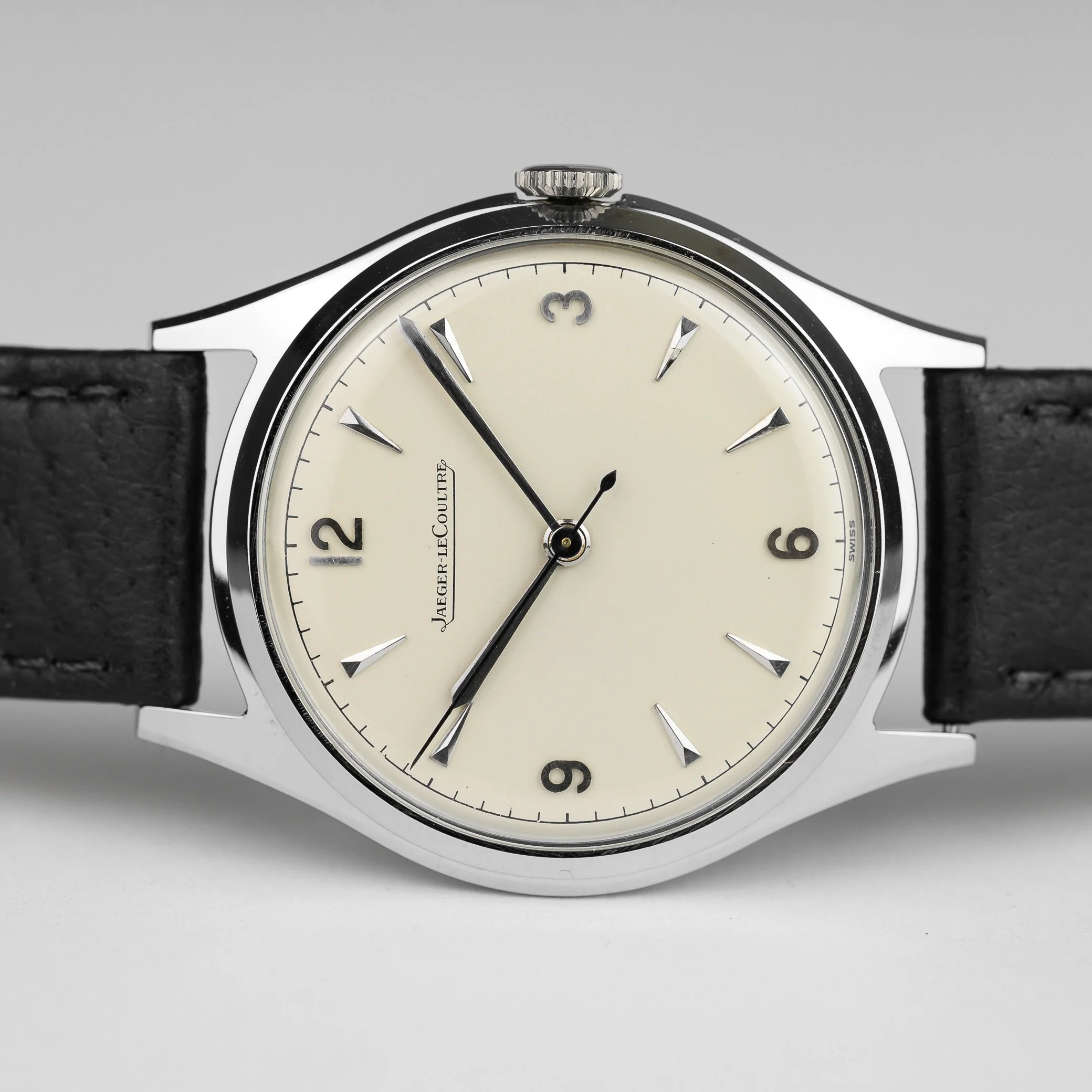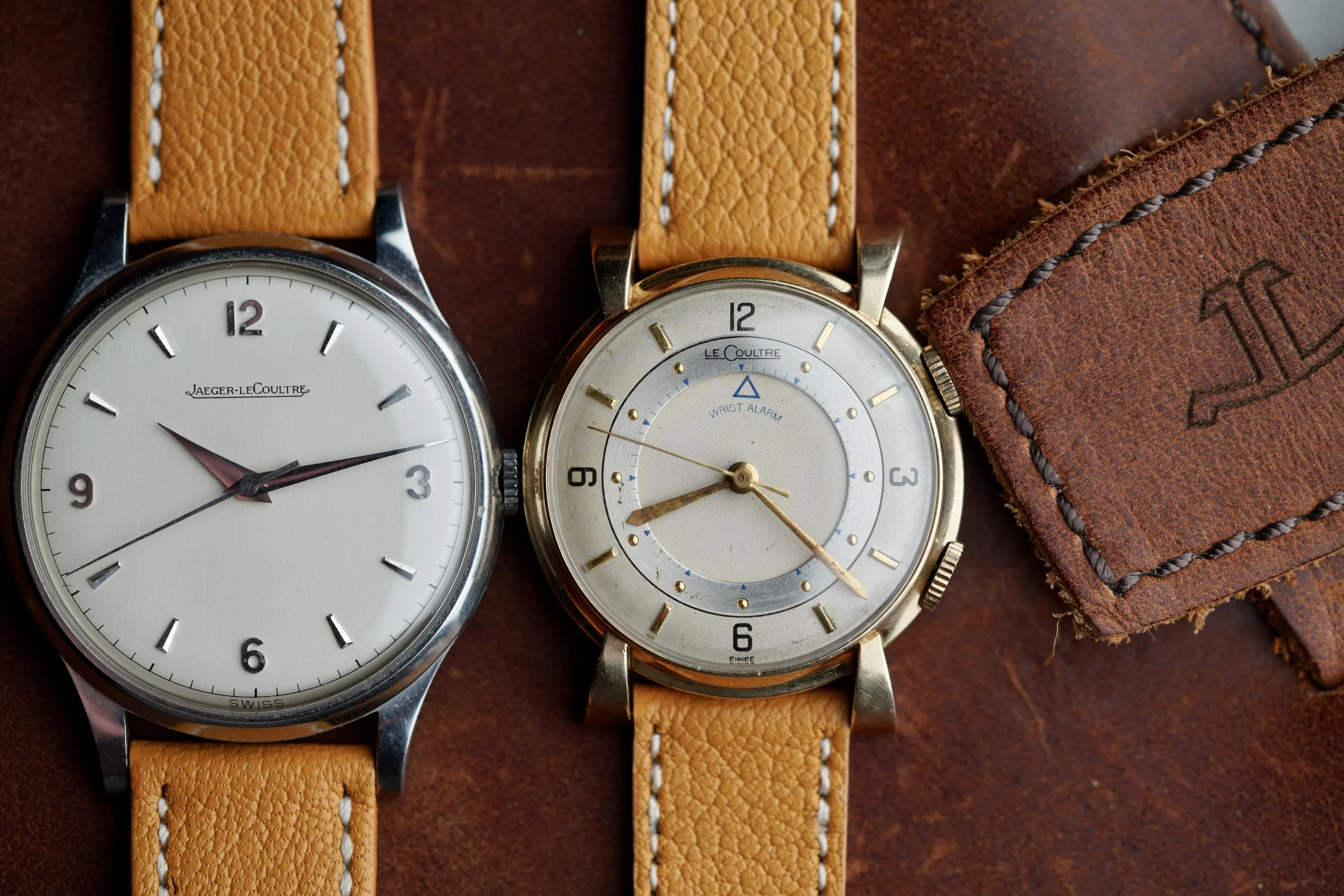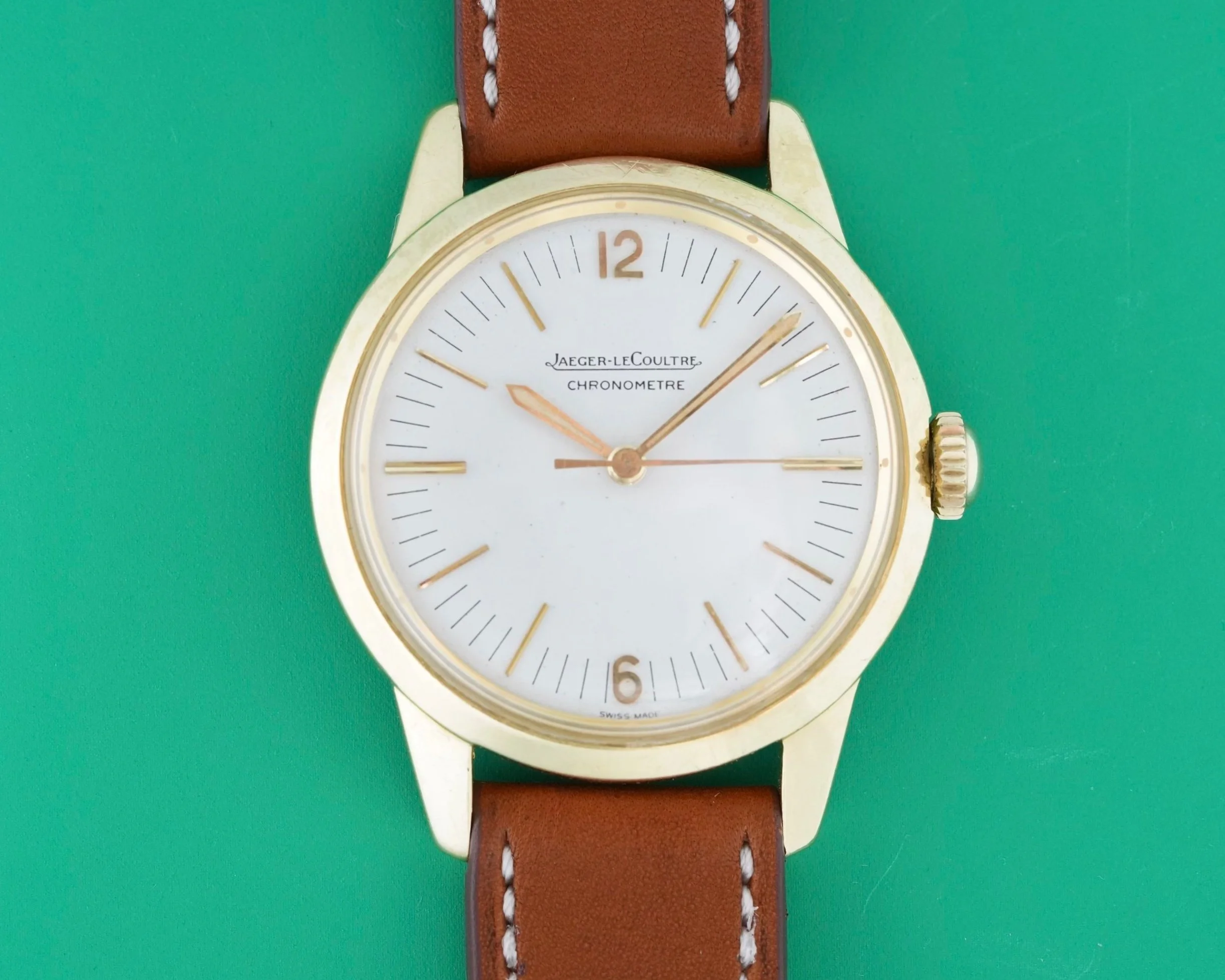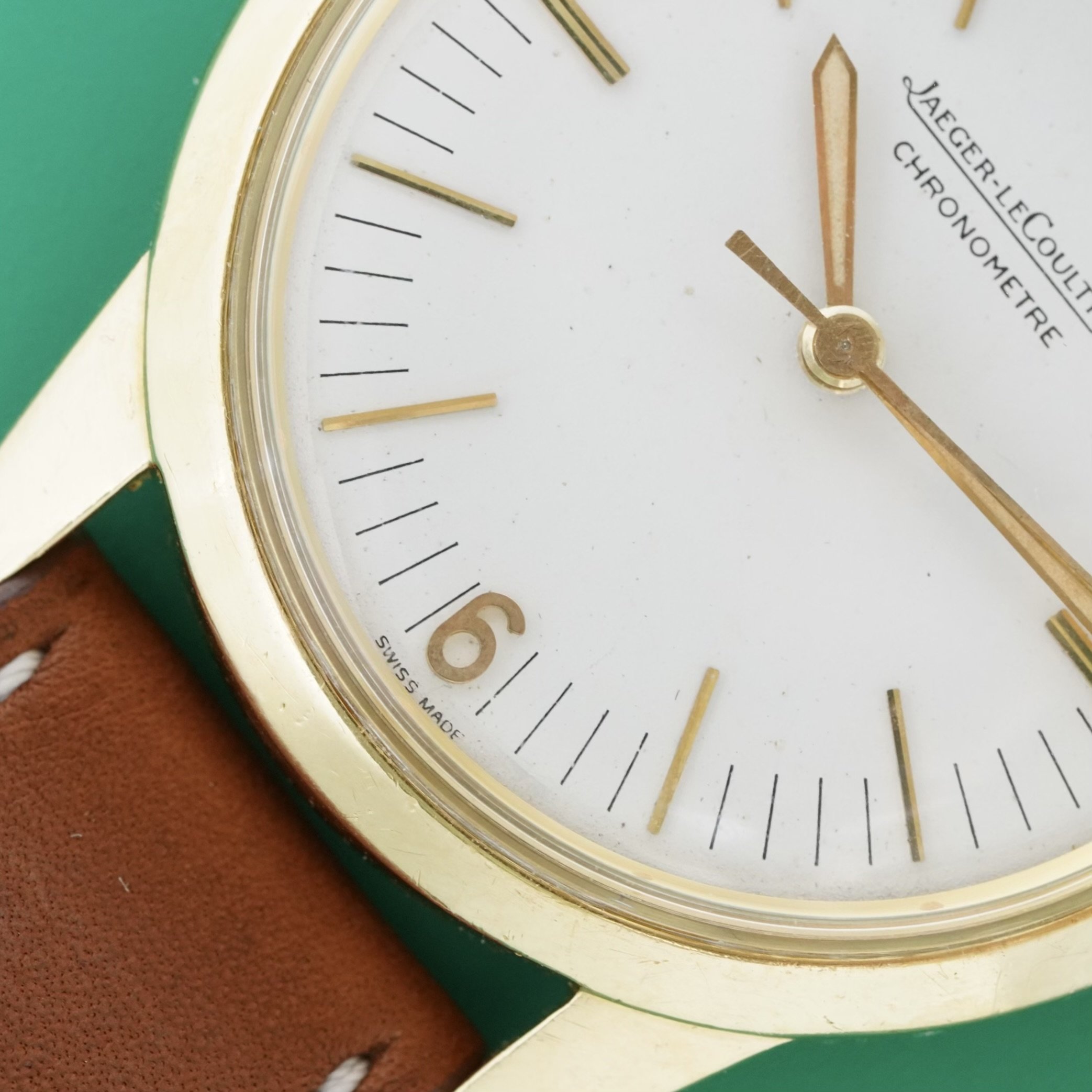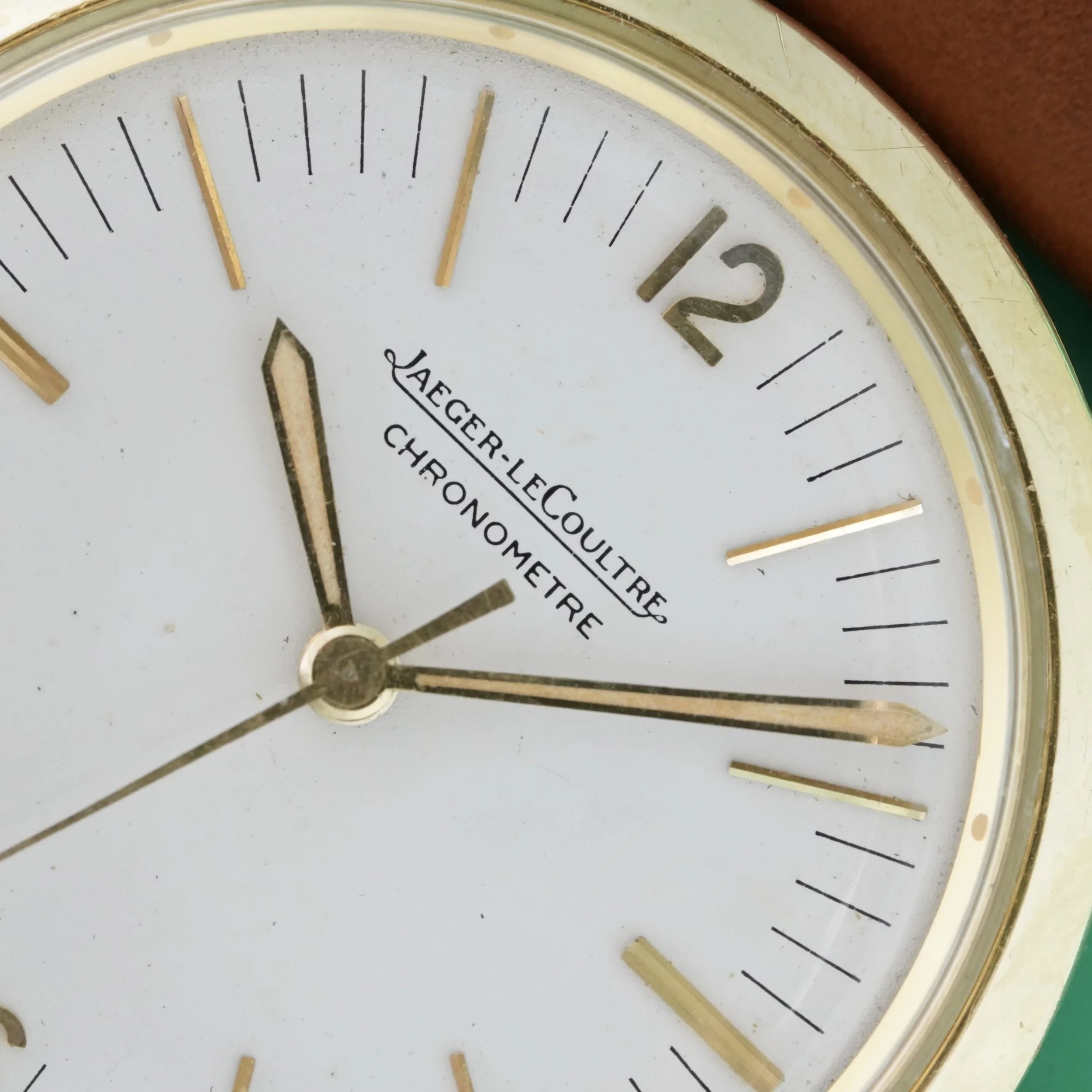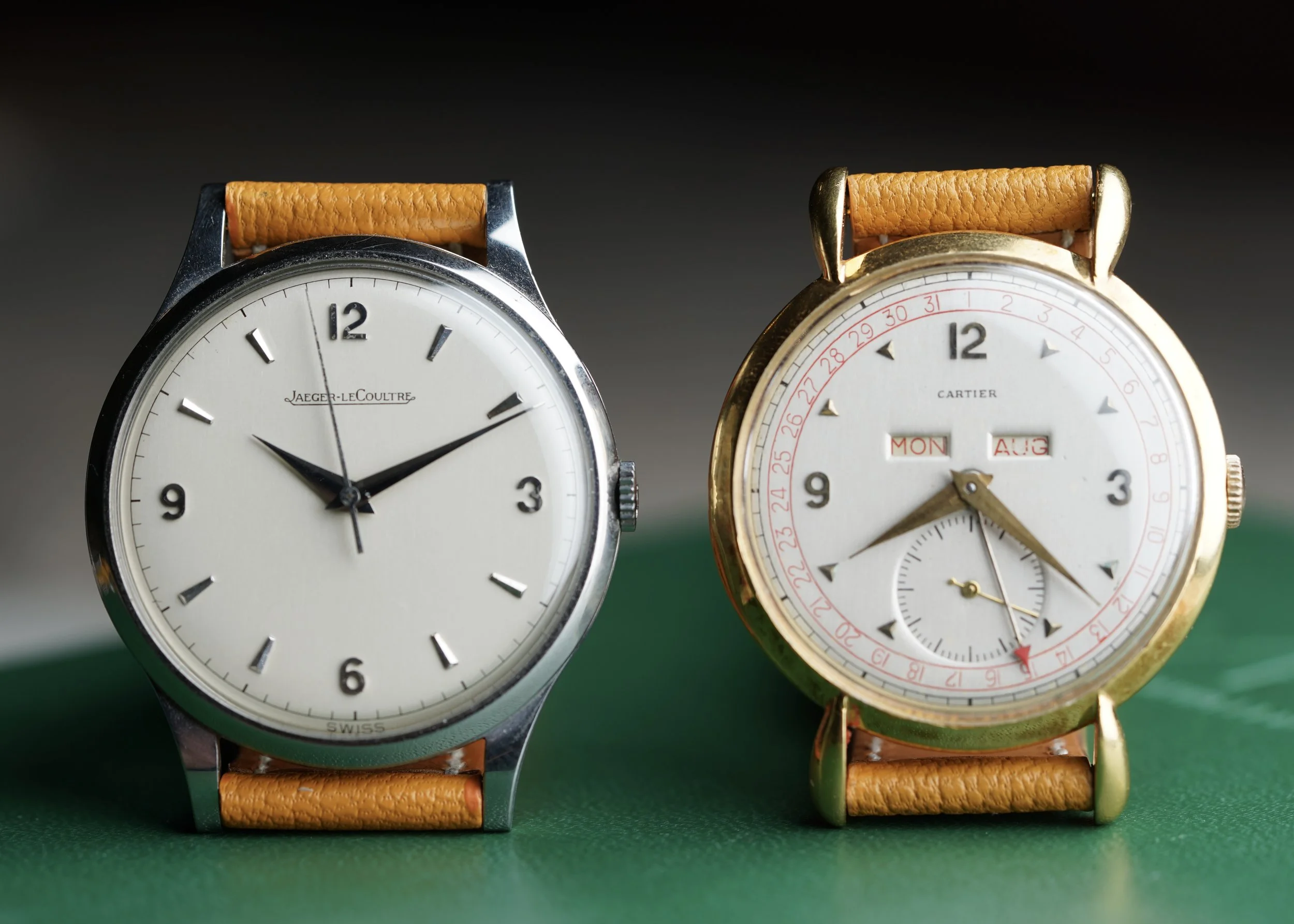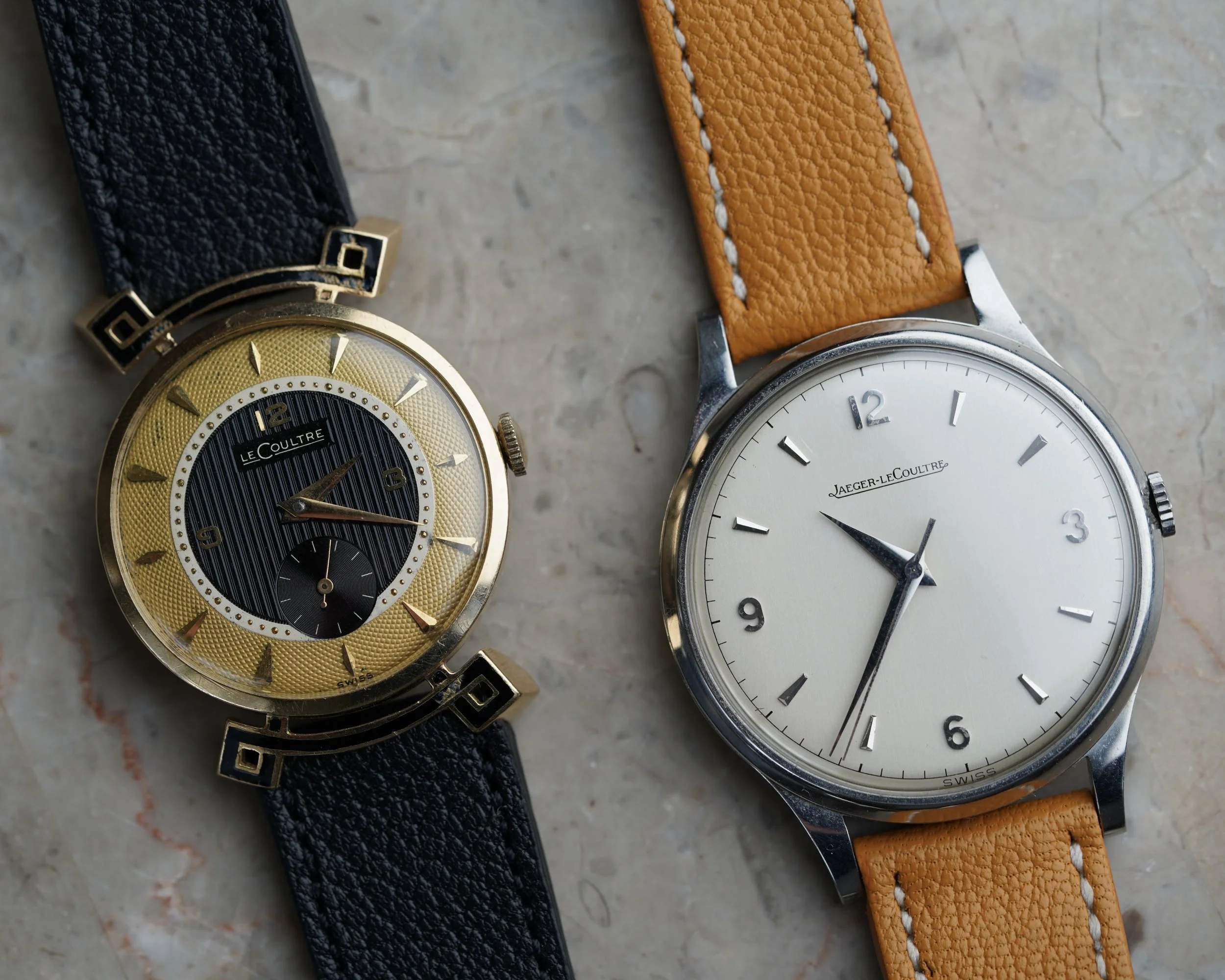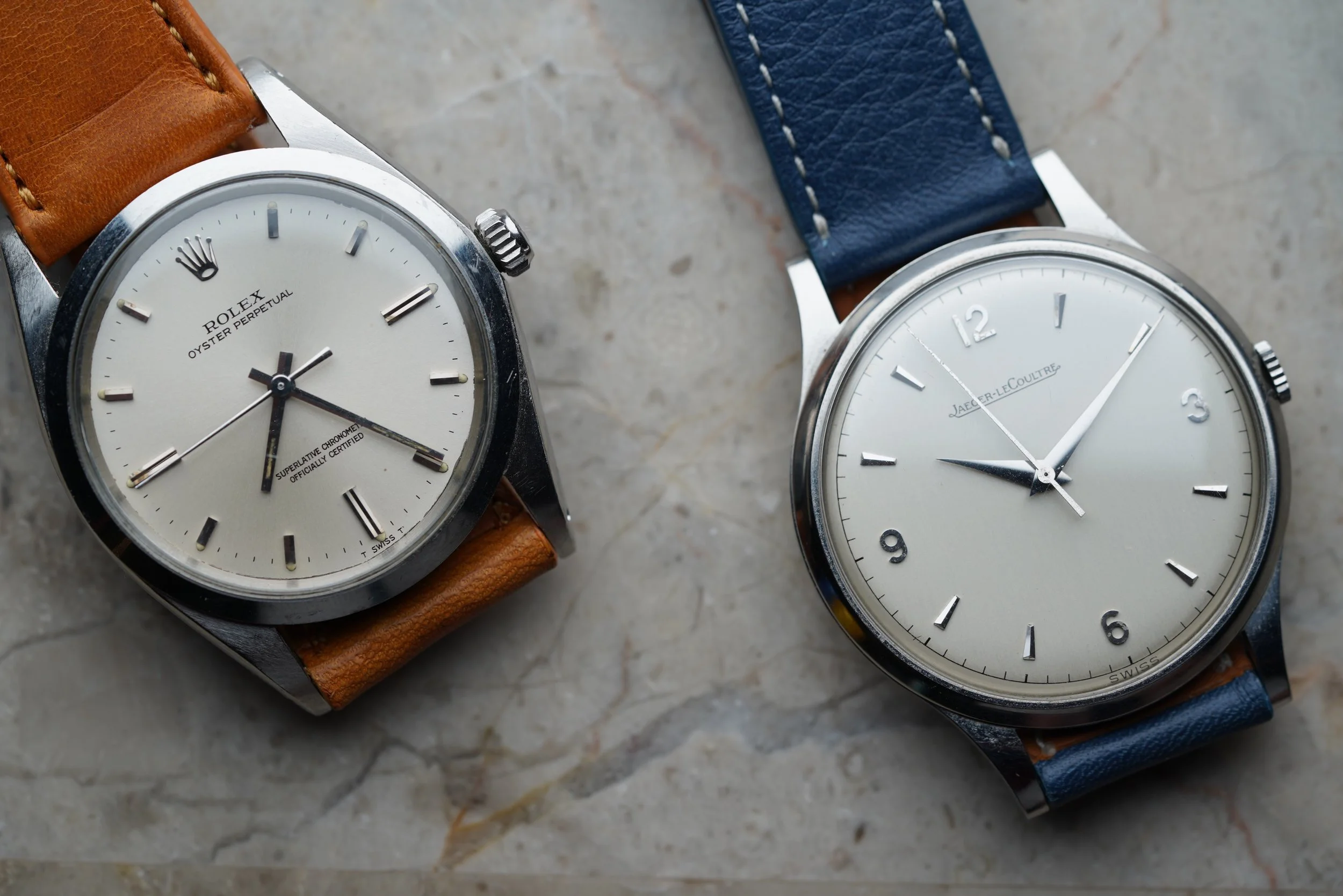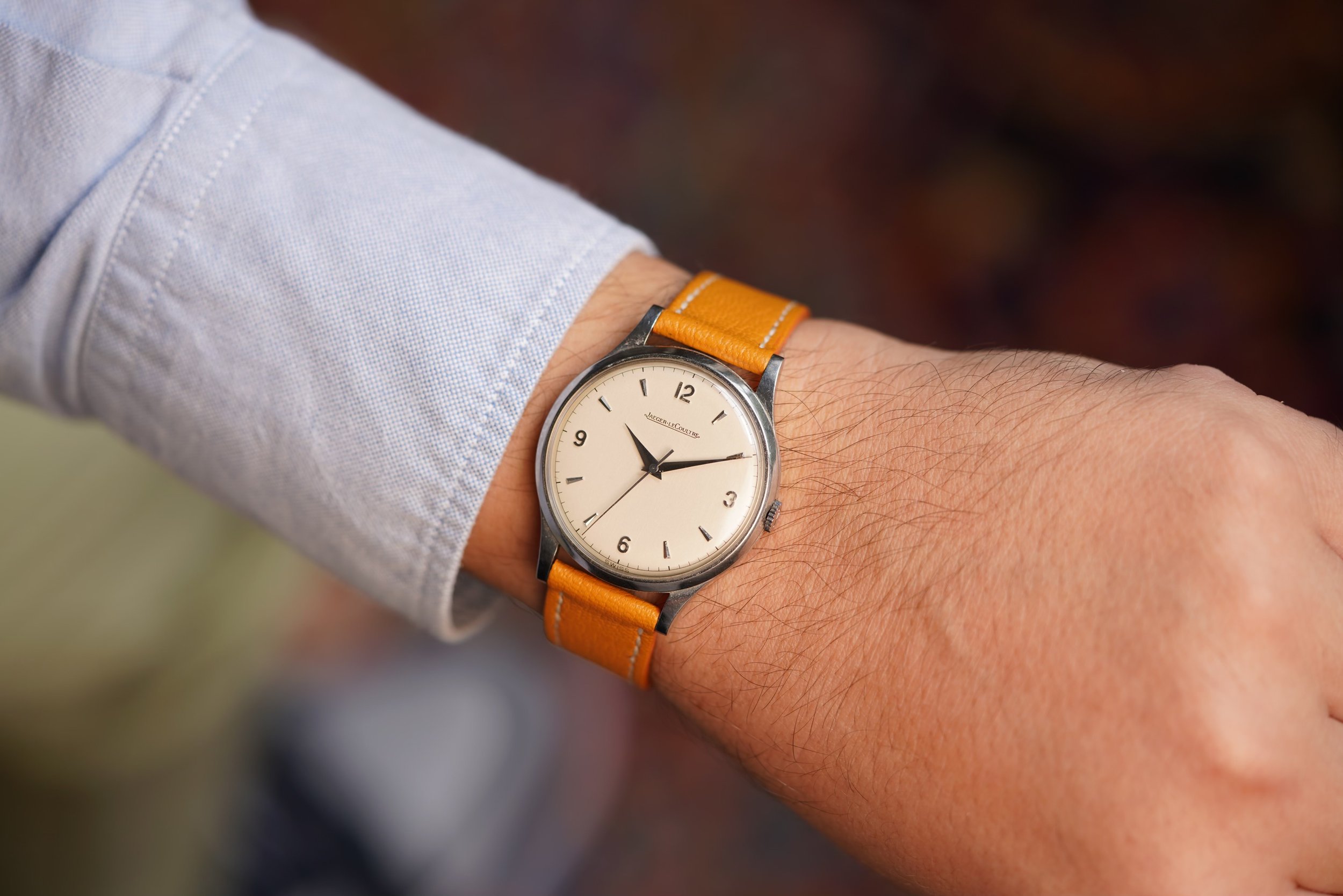The Vintage Jaeger-LeCoultre Reference 2983
It’s about time for time-only JLC to get its praise
By Charlie Dunne
Back in February 2021, I received a text message from my friend and colleague Eric Wind. Accustomed to the synonymous wristshot anyone following him on IG knows, I was surprised at the fact it was a non-high-resolution picture via a camera phone. Yet, as if it had been placed in my hand my heart just about stopped. On my screen was a simple, yet very beautiful dress watch from my favorite manufacturer. I would stare at the urgently shot iPhone photo of a watch that he mentioned was just shipped off to legendary watchmaker Alkis Kotsopoulos. Frantically, I stood up, praying that it was not already spoken for. “If it was” I thought “what kind of twisted game had Wind decided to play on me?” Rationality kicked in, and I realized I needed to act quickly.
Jaeger-LeCoultre’s manufacturing building in Le Sentier, Switzerland during the 20th century. Image credit: Europa Star (EUROPE | 1964 | ISSUE #30 | 6/6 | PAGE 62)
Advertisement showcasing Jaeger-LeCoultre’s manufacturing building in Le Sentier, Switzerland. Circa 1950s
To take a step back, I feel it is worth clarifying why I love Jaeger-LeCoultre. I was always a fan of their usual suspects: the Reverso, Futurematic, and, of course, the mighty Memovox. Each have been embedded in my mind over the years and I had been quietly obsessing over the brand privately. Hence, why I become so passionate whenever the Le Sentier manufacture is brought up in conversations (which is nowhere near enough). JLC always had a soft spot in my heart. My first vintage watch was a Memovox reference E 855 - and I must admit, looking back it was a tragic and shameful sight - overpolished and in terrible condition. I deleted the IG posts, but you never truly forget.
Early on, my heart gravitated towards simple, manual-wind wristwatches from the likes of Patek Philippe, Audemars Piguet, Longines, and the other Who’s Who of brands. During these years, I believed that Rolex was just a bit too obvious, and convinced myself that these other brands possessed greater horological heritage (Oh how things changed when I held that Rolex Oyster Perpetual reference 1018). Yet, none of the traditional time-only dress watches from the [watchmaker’s] watchmaker received the prestige that the aforementioned brands had. Also, I had yet to encounter a simple, Jaeger-LeCoultre that was both “oversized” and also in steel. The minimalist three-hand designs in the 1940-1960s were always something that I appreciated. I won’t go down the “less is more” mantra, but being renowned for complications and mass-production, the restrained designs from JLC seem to be overshadowed by everything the brand has come to be known for. It would have been foolish to pass on the watch.
I urgently called Eric and was devastatingly sent the text reply “Can I call you later?”. I messaged back “Yes, but if you can please hold off on selling that to anyone before speaking with me, I would really appreciate it.”
An excerpt showing the Land of LeCoultre (aka Le Sentier) within an American market catalog circa 1970.
The original iPhone photo received in February of 2021 I had promptly called “dibs” on.
As fate would have it, Eric Wind placed this JLC “on hold” for me. Eric told me it was one of the most beautiful vintage JLC time-only watches he had ever seen, and I could only agree with him. At the time, the reference number was unknown, and there were few identical examples to narrow in the model. The thing about Jaeger-LeCoultre time-only watches is that there are not always a large amount of decent examples that can be found on the market. There may be a large production of a specific calibre, however a specific reference / model is often few and far between. In addition, while there may not be as many vintage JLC collectors on the scene as other brands, those who do collect them are not as easily persuaded to part with their timepieces. It is an interesting dynamic, but perhaps only relevant to mention. Soon after receiving the watch, the Extract from the Archive arrived in the mail from Jaeger-LeCoultre. I would learn at that moment the reference was designated as 2975, and that the movement had been produced circa 1945. Or at least this is what I had thought.
My vintage Jaeger-LeCoultre, which I believed to be the reference 2975 during the first year of ownership.
Owning the watch for a little over a year, I would come up short in finding advertisements and catalogs featuring the reference 2975. The Jaeger-LeCoultre marketing materials have always been a bit more elusive than say those from Patek Philippe. While there is an abundance of advertisements for the American market, it can sometimes be a bit tricky to locate European advertisements or catalogs that feature three-hand JLC references from the midcentury.
I had always been quite confident the watch would have been produced a bit after the war-period. Perhaps the citation of a 1945 movement was for the movement’s production, and that it had been cased at a later point. Yet, nothing concrete was coming up from the 1950s during my searches. I consulted with other Jaeger-LeCoultre collectors who had been proactively collecting primary source material, yet nothing would develop on that frontier.
1952 Jaeger-LeCoultre Catalog
At this point, I would seek out the assistance of Jaeger-LeCoultre’s Heritage Department which proved to be a critical development. After brief correspondence with Senior Product & Heritage Manager Laurent Kervyn de Meerendré, and Product & Heritage Director Matthieu Sauret, I was informed my watch was not a reference 2975, but rather a reference 2983!
Kervyn de Meerendré would respond with an illuminating insight by sharing a historical JLC catalog from March of 1952. This catalog would feature several references, each showcasing case size citations. The page featuring my model would cite “These models are made in steel, round movement 12.5 ligne. Models 2961 and 2983 with sweep-seconds.” Most notably, Kervyn de Meerendré would point out the reference 2975 featured drilled lugs and a case diameter of 32mm in diameter (as opposed to the 37mm case diameter on my timepiece). Sitting in a Greek airport with Max Braun and Eric Wind (both passionate LeCoultre collectors in their own right), we glared at my laptop screen with excitement at the recently sent PDF catalog. Soon after, I would be sent an updated Extract from The Archives indicating my JLC’s production to circa 1952.
Image courtesy of Jaeger-LeCoultre
Image courtesy of Jaeger-LeCoultre
Extract from The Archives
Extract from The Archives courtesy of Jaeger-LeCoultre.
The Dial
One of the first things that stands out on the dial is the applied-Arabic numerals located at 3, 6, 9 and 12. The numerals are complemented by dagger markers also seen on plenty of models from this era, including the Memovox reference E 850, reference E 851 or reference E 372 shown below. In addition, the present example features dauphine hands as opposed to the sword hands seen in the catalog provided by the Jaeger-LeCoultre Heritage Department.
Jaeger-LeCoultre advertisement discussing the Swedish company Svenska Metallverken which features the ref 2953. Image credit: hprints
Jaeger-LeCoultre catalog with reference 2983 and reference 2953 feature the calibre P450/4C. Image credit: carousell.sg
This layout differs slightly to the applied even numerals seen within the 1952 catalog, as well as a different catalog from the era alongside a reference 2953. For context, the 2953 will often incorporate the 12.5 ligne calibre 450 movement and appears to also share the same dial layout as the present 2983 in the above 1957 advertisement featuring the Swedish company Svenska Metallverken. Beyond the 2953, the dial layout can also be seen in models such as the reference E 163 (albeit slightly different numerals), the iconic Geophysic reference E 168 (at 12 and 6 o’clock), and various Futurematic models.
JLC Powermatic. Image credit: amanico
Reference E 163B. Image courtesy of Jaeger-LeCoultre
Recently speaking with my friend and collector Dominic, he would emphasize that the symmetry and balance within the dial is what he appreciated the most. I had to agree with him. The design is what my father would always describe as “understated elegance”. The type of product which can easily be overlooked and does not attract attention. With more daring styles coming out from the American market, the reference 2983 epitomizes a classic watch not for the individual looking for frills of the era. Only upon close inspection under a loupe are the faintest signs of patina on the hour markers discernible. Just below 6 o’clock, the large font “SWISS” can be seen. Within many of the service dials for watches of this era, a smaller font will be present.
Calibre P450/4C
As previously discussed in the article ‘Parechoc and the P450/4C’, the movement in this model can be found in both military watches from the 1940s, as well as dress watches well into the 1950s. The difference in decoration of the calibre P450/4C is quite discernible compared to the purpose-based rhodium-plated military timepieces cited within Basha’s book ‘Jaeger-LeCoultre: A Guide for the Collector’. This was one of the reasons I felt the movement may have been from the 1950s. After a small amount of time comparing other calibre 450s online, my impression is the calibre P450/4C differs in the decoration, and potentially is a higher grade movement in which the section surrounding the balance wheel was improved upon. The calibre (and later modified versions of it) would be used frequently in three-hand JLCs. It possesses a 40 hour power reserve and operates at a rate of 18,000 vbh.
Jaeger-LeCoultre Calibre 450 Technical Sheet. Image credit: https://watchguy.co.uk/
Watch researcher Stephen Foskett would provide context to the calibre naming system. The P450 indicates the calibre incorporated the shock protection via Parechoc. As Foskett writes “Prefix letters generally refer to shock protection systems, though these are rarely used in modern times. “P” was Parechoc, while “K” was Kif.” The numeric suffix /4C denotes “minor revisions, as is the case for other movement manufacturers. Some Jaeger-LeCoultre calibres have a “/2” variant, for example, when changes were made that did not require a new calibre number.” From a visual perspective, the Jaeger-LeCoultre movement is quite an elegant specimen. While other manufacturers incorporate Côtes de Genève, the decoration on the calibre P450/4C features a more of a style which speaks more to the Vallée de Joux than those from Geneve. It is a very beautiful design which is well decorated. The decoration on this movement is more industrial, and represents the efficient mass production associated with the manufacturer. When compared to the Côtes de Genève style, there is a difference from an artisanal sense.
Parechoc S.A. LeSentier advertisement. Image Credit: Europa Star: (TRADE BULLETIN | 1950 | ISSUE #197 | 1/13 | PAGE 8)
KIF (Parechoc S.A.) Advertisement featuring kangaroo. Image credit: Europa Star circa 1966
The Case
The reference 2983 features a three-body case (bezel, midsection, and snap-on case back). It measures 37mm in diameter or 45mm lug-to-lug. This would certainly place the 2983 within the “jumbo” territory. Other notable models from the era include Powerwinds, Futurematics, and several waterproof cases of the period. At slender height of 10mm (including the domed case back and crystal), it is very much a dress watch that at best can be made a bit more casual with the likes of a tan or brown strap. It is one of those timepieces that could be described as “all dial”. The bezel is very minimal in size, and does not enhance the watch in any physical sense. The steel crown is signed “JL” and I am confident this component was added at a later date.
Both the bezel and lugs’ surfaces are polished to a mirror finish, met with a crisp edge, and ultimately accented with a horizontally brushed profile. The lug width is 18mm. One detail worth highlighting is that the lugs taper in, giving a very elegant design also seen in Powerwind and Memovox models below. This is one of my favorite features in vintage JLC cases, as it is executed very beautifully and visually enhances the proportions of the case. Each time I wear a reference with these lugs, I am always thrilled by the sight of this simple element. Per the citation within the catalog of the reference 2983 “models [being] made in steel”, I won’t say for certain that these were exclusively in steel, but it does raise the question whether any precious metal examples were produced. In my searches, I have yet to see any.
On the exterior of the case back, a serial number (or case number) is present. For this period, reference number are absent from the cases back. Instead, it features “ACIER INOXYDABLE” (Stainless Steel) and “LECOULTRE CO SWISS”. The interior of the steel case is decorated with a beautiful perlage which is a nice touch. The technique was originally incorporated for catching any dust or materials that could potentially hinder the performance of the movement, however, at this point the practice is more about beautification and tradition.
Perhaps the most comparable examples outside of the time-only references are the Powerwind models. The symmetry and balance within these models are very appealing and have enjoyed a bit more celebration amongst collectors over the years compared to the time-only models due to their complicated nature with power reserve aperture. These “oversized” models in steel, generally European market examples, often take on a variety of dial formats.
Jaeger-LeCoultre Powerwind and reference 2983
A vintage Jaeger-LeCoultre Powerwind also 37mm in diameter or 45mm lug-to-lug (slightly thicker cased based on the automatic calibre). Image credit: Wind Vintage.
Image credit: Wind Vintage
Jaeger-LeCoultre reference E 372 and reference 2983 on a 1934 Jaeger-LeCoultre advertisement by Laure Albin Guillot.
Jaeger-LeCoultre reference E 372 also 37mm in diameter or 45mm lug-to-lug (slightly thicker cased based on the automatic calibre).
Comparative view from the case profile of the 2983 vs the reference E 372. The E 372 features an angular midsection and slightly more aggressive angled lug. The unsigned crown on the automatic model is similar to what one should expect to see on an 2983.
Below are several JLC timepieces designed in the 1950s and 60s to to give a visual context on the JLC 2983.
Two Jaeger-LeCoultre Futurematic "Porthole" models with similar Arabic numerals and slightly larger dagger markers. Images courtesy of Davidoff Brothers
Two Jaeger-LeCoultre steel dress watches with snap-on case backs and similar applied-Arabic numerals. Images courtesy of goldammer
A similar time-only Jaeger-LeCoultre with waterproof case measuring (33mm diameter or 41mm lug-to-lug).
Jaeger-LeCoultre reference 2983 and an American market LeCoultre Memovox which measures 32.5mm (37.5mm). Both watches from the same period.
Vintage Jaeger-LeCoultre ref 2983 and Memovox reference E 851 from circa 1956 (35mm or 44mm length lug-to-lug).
Vintage Jaeger-LeCoultre ref 2983 and Memovox reference E 850 on a 1938 Jaeger-LeCoultre advertisement by Laure Albin Guillot.
Vintage Jaeger-LeCoultre ref 2983 and Memovox reference E 850 (33mm in diameter or 41mm lug-to-lug). The dagger hour markers on both models are the same proportions.
Jaeger-LeCoultre Geophysic reference E 168 in 18K gold. Image credit: Wind Vintage
Cartier Calendar model by Jaeger-LeCoultre
LeCoultre with fancy lugs (30.5mm in diameter or 39mm lug-to-lug) and Jaeger-LeCoultre reference 2983.
Jaeger-LeCoultre reference 2983 and LeCoultre Memovox reference 2404 (33.5mm wide or 42mm lug-to-lug) from circa 1962.
The Memovox reference E 875 produced over two decades later, yet features nearly the same case dimensions of 37mm diameter (45.5mm length lug-to-lug) with a very different case design.
Visual context of the Jaeger-LeCoultre reference 2983 holding its own besides the “oversized” Rolex Oyster Perpetual reference 1018 (36mm diameter or 43mm lug-to-lug).
Closing Thoughts
I’ll admit, I don’t wear my reference 2983 as frequently as I could. Living in Florida’s humid environment, I have a tendency to be a bit more cautious with this timepiece. I am much more comfortable wearing my Memovox reference 875.42 due to its “waterprotected” case. Yet, I often wear this watch around my apartment and will find myself winding it up when have a more formal event to attend. As seen in several of the photos, the 2983 is a pretty versatile watch being able to take on flashy-colored straps, beads-of-rice bracelets, or, my personal favorite, the casual tan leather strap.
During my trip to Switzerland last year, I contemplated which watch I would take with me during a short trip to the Vallée de Joux. Feeling a desire to bring it back to its former home in the Vallée, the 2983 was instantly packed up. To me, it is a beautiful timepiece, and in many ways is a departure from what most visualize at the thought of vintage Jaeger-LeCoultre. The reference 2983 is relatively rare, however the calibre 450 was a mass-produced movement being used in a wide array of time-only wristwatches by the manufacturer. I have yet to come across other reference 2983 models in person, but there are a handful of examples that can be seen online. In the future, I do hope to one day see more examples - in addition to more oversized time-only JLC wristwatches. The entire subsection of steel dress watches from Jaeger-LeCoultre is very underrepresented amongst collectors, despite being such a romantic genre from the brand. Hopefully, this is just the beginning of a broader conversation.
Acknowledgements:
A very special thanks and acknowledgement to the Jaeger-LeCoultre Heritage Department, Senior Product & Heritage Manager Laurent Kervyn de Meerendré, and Product & Heritage Director Matthieu Sauret, and Expert en Horlogerie Ancienne Giuseppe Sciascia for their generous assistance. Special thanks to Eric Wind of Wind Vintage. Very special thanks to Dominic, for graciously sharing watches from his personal collection for visual context. Additional thanks to my fellow JLC collectors contributing to the discussion WatchProSite, in addition to those who provided photographs of their JLCs serving as visual context for the article.
To read about other Jaeger-LeCoultre timepieces, see below:
Collector’s Guide: Jaeger-LeCoultre Memovox Reference E 875
A Vintage Jaeger-LeCoultre Memovox Catalog Circa 1958
LeCoultre Chronograph Reference 224115
‘Vintage LeCoultre Memovox Reference 2404 (Circa 1960s)’
‘Vintage LeCoultre 8 Day Alarm Travel Clock Reference 53’
‘Vintage Jaeger-LeCoultre Memovox Reference 3157 aka the “Travalarm”’
‘Jaeger-LeCoultre Reference 11016 A Clous de Paris alarm clock from Christmas of 1972’
‘Jaeger-LeCoultre Reference 11012 Retailed by Hermès’
‘Jaeger-LeCoultre Memovox Reference E 851’
‘LeCoultre Memodate: A Vintage Gold-Filled Gift For A 13 Year Old Collector’
‘Watches Within A 1938 Men's Fashion Catalog’
‘Photo Gallery Vintage Jaeger-LeCoultre Reference 2983‘
‘Parechoc and the P450/4C’: What is Parechoc, and what is it doing in my JLC?’
